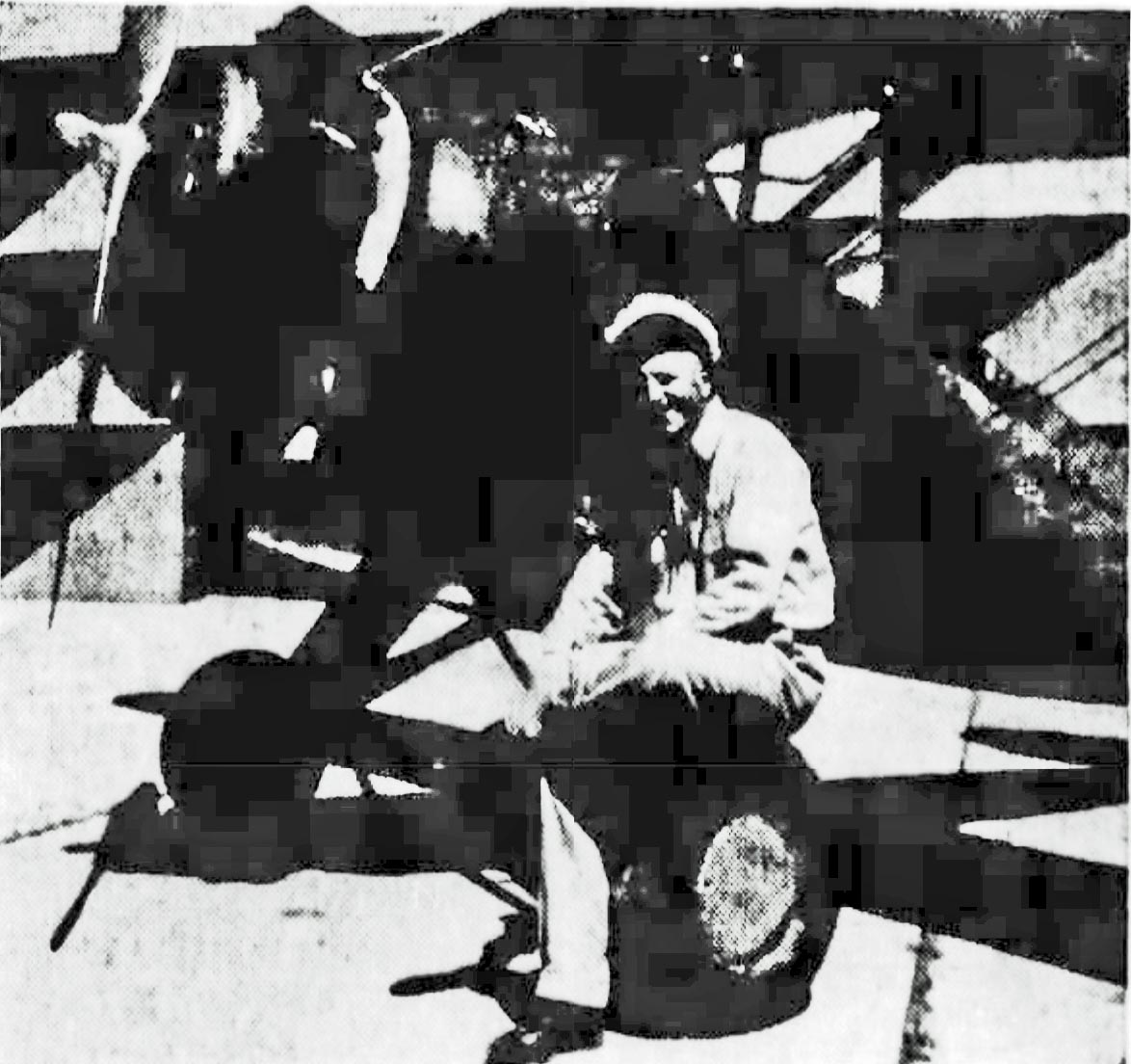
How many people, besides Orville and Wilbur Wright, do you suppose have flown a plane and carried passengers with basically no instruction? How many have flown in a blizzard with whiteout conditions and no fancy instruments, and lived to tell about it? And, how many have flown solo at age 90 with a license that allows them to carry passengers? This article is about a man who did all those things and more.
Why I Researched This Man
I started to research Henry D. Ellis, my great-great grandfather’s brother, who moved to South Dakota instead of moving to Kansas with most of the rest of the family. I have a letter he wrote to my Grandpa McCracken telling him about work near where he lived. He clearly was still in touch with the family and I always wondered why he went to the wide-open spaces of South Dakota.
While researching, an article about Henry Ellis taking a flight in 1929 caught my eye because he was born in 1845. I wondered what it was like for someone who grew up before cars even existed to fly in a plane. Then I noticed that the pilot was his grandson. In learning more about the flight, I learned that his grandson Clyde Ice had quite a story.
The Early Days
Flying On His Mind
Clyde Wilbur Ice was the son of Henry’s daughter John and Josephine “Josie” (Ellis) Ice. He was born in 1889 near Miller, Hand, South Dakota. Apparently, he was interested in flying from when he was a young child and his grandmother told him that people would be able to fly one day. He then became enamored with the skies when he heard about Orville and Wilbur Wright’s flight at Kitty Hawk. Long before he ever saw an airplane, he knew he would one day pilot a plane. He once said, “I used to lay out in the grass while herding cattle, watching those cranes fly without moving their wings. I’d watch them by the hour, and I’d just wish, as well as anything, that those cows had wings, and I’d bet I could ride one of them.”
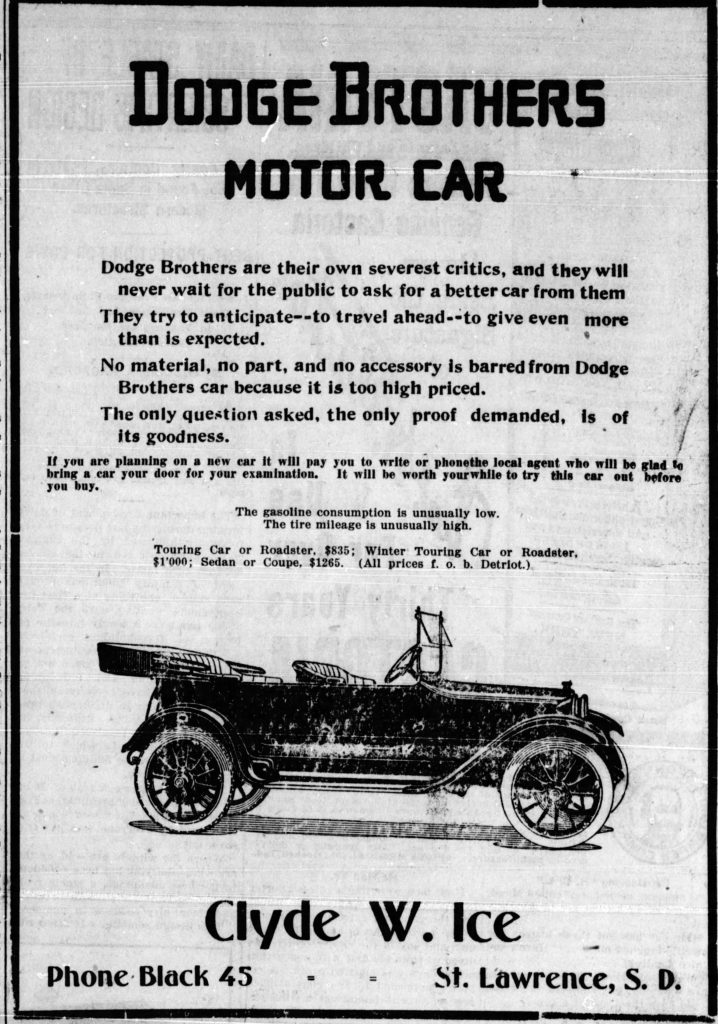
Before Flying
Clyde was educated in a rural school. However, he was lucky enough to be able to go to a nearby town for high school and then also attended college for two years. A college education was very uncommon in the early 1900s, especially for people living in rural areas. Sometimes they weren’t even able to attend high school because of the distance to the closest school.
North Dakota
Just before his 25th birthday (1914), Clyde bought a 150-acre farm in North Dakota. He came back to South Dakota, got married, and the couple returned to North Dakota to make their home.
It is unclear why, but by the time Charles, their first son, was born, Clyde and his wife had returned to the vicinity where he grew up. The next year he was shelling corn at several elevators in the area.
The Salesman
By December 1916, Clyde had started selling automobiles. Dodge Brothers in St. Lawrence, South Dakota was his first venture into auto sales.
The following year, his name came up in the World War I draft, but he remained at home for the time being. He was then selling cars for Franklin Automobile in St. Lawrence and Huron. In addition, Clyde was an insurance agent for Minnesota Mutual Life.
In early 1918, he had smallpox, but recovered quickly. In a few months, Clyde advertised that he was selling off cars before he went into the Army. These ads occurred as late as August and his brother George had enter the Army Air Force in July. Still, Clyde remained at home. Later in the year he was again selling cars. He had Fords and Chalmers. He never entered the service.
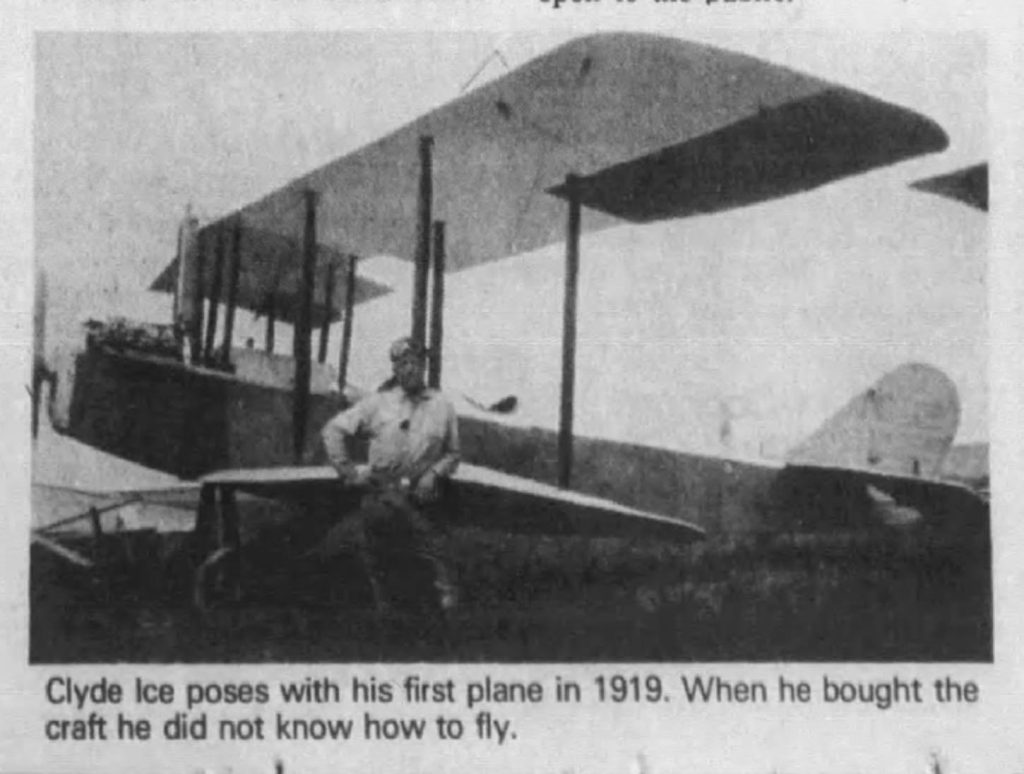
The First Plane
Clyde bought his first airplane – a Jenny – in 1919. He didn’t yet have a pilot’s license. Matter of fact, he had never taken a single lesson. But, he knew he wanted to fly.
He somehow learned of a man near Fargo, North Dakota that had a wrecked plane for sale. So, he rode his motorcycle there. He found that the plane was upside down. The owner had won the plane selling subscriptions to the St. Paul Dispatch and didn’t realize that he had to tie down the plane or the wind would wreck it.
Clyde traded two used cars worth about $800 total for the Standard biplane with an OX5 Curtiss engine and a whole 90 horsepower motor. His next task was to get it upright and flyable. Once it was ready to go, he got a barnstormer he knew to fly it out of the farmer’s field.
Learning to Fly
The barnstormer apparently didn’t want Clyde to fly. He was competition and he wanted Clyde to continue pumping up crowds for him and selling tickets for rides in his planes. Clyde appears to have been a good sales person.
The barnstormer tried to derail his flying by telling him to take two men in it. The man knew the weight was too much for them to get off the ground, but Clyde didn’t realize that yet. Clyde told the guy, “You know I can’t fly those guys there. I never flew a plane in my life!” He responded to Clyde by stating, “Well if you don’t want the $50 they are offering . . . ” And, with that, the barnstormer flew off.
Clyde thought the $50 sounded good and he had read everything he could find about flying. So, he decided to give it a try. When he realized that he wasn’t going to clear the fence and he turned the plane. He tried again. After a couple of tries, he turned the plane a bit too late. He saved the plane. However, he ended up with a broken wheel and two very angry passengers who had no idea that he didn’t know how to fly!
The First Solo
One day Clyde got in the plane and just started flying. He said,“I just got in and flew it, believe it or not,” he recalls. “After all the thousands of hours of classes I’ve given students I don’t know how I got away with it… but there didn’t seem to be anything to it.” That day, he headed toward Miller, SD where he lived, but it started getting dark and night flying just wasn’t done in those days. So, he decided to sit the plane down. But, he had a problem; he didn’t know how to land. So, he cut the power and ran until the plane stopped, which was in a haystack.
The First Paying Passenger
Soon, Clyde was back selling tickets for the barnstormer. The barnstormer went to lunch and hadn’t come back. While he was gone a man had paid $5 for a plane ride with the barnstormer. The man was getting impatient. So, Clyde thought he better take him. So, he climbed in and off they went. It was Clyde’s second solo flight, but the man had no idea. When they came down, he landed it like a pro. He made his first $5 flying and from that point on he was a pilot.
In those early days, he kept his day job. He was a dealer for Franklin, Knapp Brown & Company. And, he was a sales agent for an auction with a long list of vehicles being sold by multiple entities in the area.
But, he kept flying. He would give kids free rides. It was an excuse to fly and he was still learning. I can’t imagine the parents if they found out their kids were flying with someone who basically had no training.
In that first year, Clyde obtained his pilots license. His entire instruction had consisted of his observation of pilots, paying a guy $30 to let him take control of the plane while in the air, and flying a few hours with another man. None of it actual instruction. Yet, he obtained pilot’s license No. 1,598 and aviation mechanic’s license No.1,927.
Then, in 1921, he started building a business in the air. One of his early ventures was a mail route to Gann Valley. He made two trips a week, delivering mail, selling stamps, and other activities of a mail carrier. He also began planning for passenger flights. That year he bought a plane from guarantee Aircraft Company for commercial purposes.

Air Shows
Then, in the tradition of pilots of the barnstorming era, Clyde started to fly from town to town, selling tickets and giving rides. Over the next several years, he gained a reputation as a barnstorming pilot, parachute jumper, stuntman and charter pilot.
His performances included what was called an aerial circus, which included death-defying stunts. Some were parachute drops (including delayed parachute drops), rope latter tricks, wing-walking, trapeze performances, dropping daylight fireworks, and sending down aerial bombs. He had done the acrobatics before he became a pilot. Thus, it gave him a complete understanding of the tricks.
In Trouble
One day during a performance, an acrobat lost his grip on the rope when several hundred feet up. Fortunately, Clyde realized the acrobat was in trouble and began descending toward a lake. Clyde hoped to drop the acrobat into the lake unharmed. On the first pass, the acrobat didn’t drop. This worried Clyde as he wasn’t sure what the situation was for the acrobat. He made and second pass. This time the acrobat dropped into the water. The man swam to the shore and collapsed. He was completely exhausted and had a slight injury. He needed rest, but was more shaken by the experience than anything else.
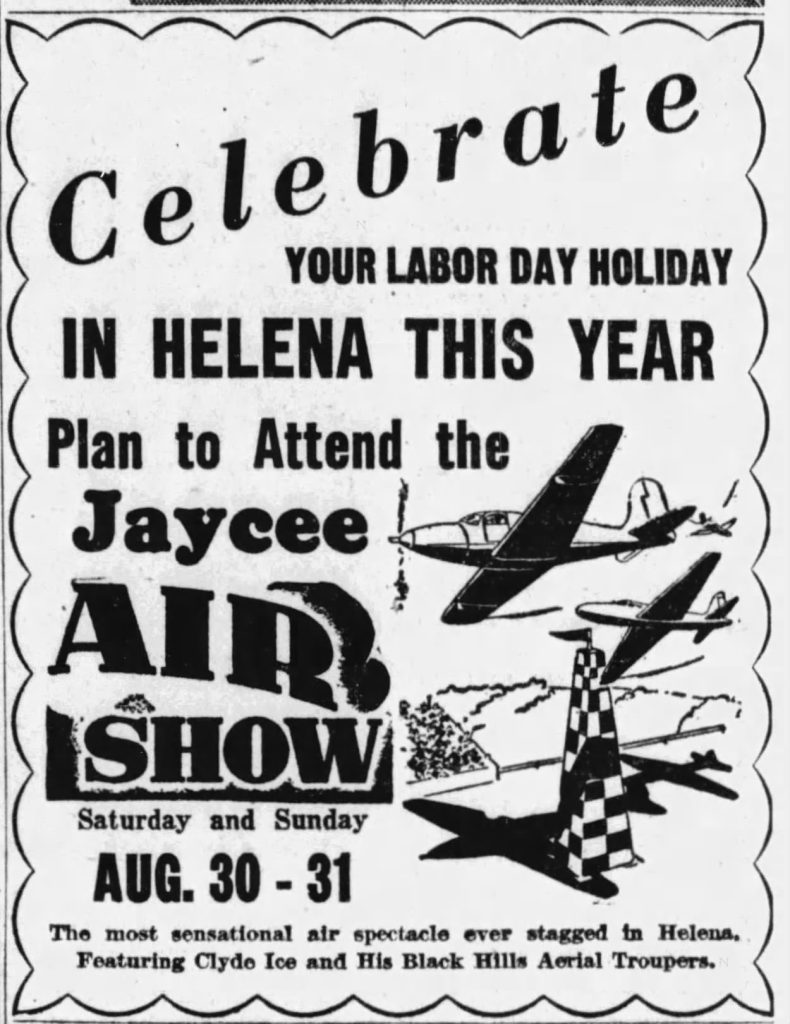
Fancy Moves
Besides the acrobatics, Clyde did maneuvers with the plane that excited the crowds. He did loop-the-loops, barrel rolls, and flew with others in military formations. When he got a Ford Tri-motor (more on that later) he became the first person to loop that “gigantic” 15-person plane. He also did power divers, wing-overs, and more with it.
The men that made the rounds performing at the airshows were dedicated fliers. Six men toured together in 1932 as an aerial acrobatic team. Forty years later, all but one were still flying. The other had been killed in a crash.
Parades
Clyde also participated in ship parades, which were parades of airplanes, and aerial races. In those early years, they often referred to airplanes as ships.
Going For A Ride
At these events, Clyde also offered rides in his plane. The price varied, likely based on demand and the economics of the area. Sometimes he had specials, such as, a penny a pound – you paid what you weighed. Most of these flights were for a few minutes. However, some were tours of the area. During an air show in Brainerd, Minnesota, he offered longer flights to Canada with one to International Falls and another to Winnipeg. One of these flights, he flew the people to the location. They stayed overnight. And, then Clyde returned them to Brainerd the next day. He also sometimes offered special charters during the show. Basically, anything to make money.
Over the Years
Clyde and his brother George, a WWI pilot, did shows in several states. These shows drew large crowds and helped grow interest in air travel.
In 1941, Clyde was one of the sponsors of the local Air Fair. He was also responsible for obtaining attractions and managing the show. It was estimated that 10,000 people attended the show that year. The following year the show was scaled back to one day with only local talent due to rules in place due to the war, and the fact that a lot of pilot training was going on at the airport. Other shows were simply cancelled.
After the war, the air shows came back. Clyde’s performance included demonstrating aerial coyote hunting. I am not sure exactly how he demonstrated his technique to a crowd. His son Cecil also participated by demonstrating “how not to fly a cub plane.” Another attraction was knocking out a run-away jeep with flour bombs.
Having started in 1934, the shows at the Black Hills Airport lasted until 1948. The largest crowd to ever attend was estimated at 15,000 people.
 Coyotes
Coyotes
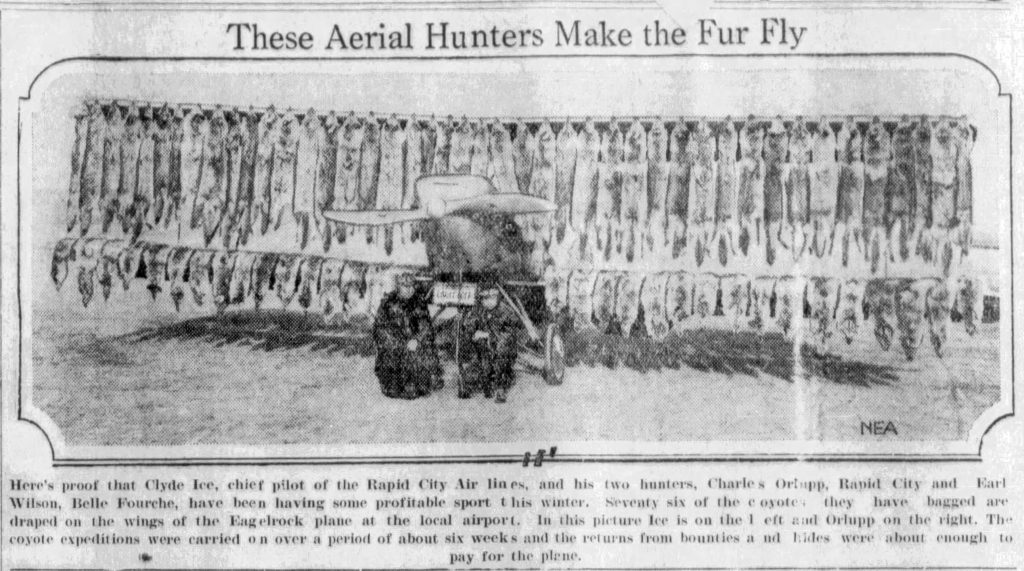
You might ask what coyotes are doing in a story about someone flying airplanes. Well, Clyde is credited with inventing coyote hunting from an airplane. Coyotes were aplenty and ranchers and sheep farmers wanted the coyote population reduced. Clyde came up with the idea around 1924 or 1925. He started out trying to be both pilot and hunter. However, he found it was much easier if he had a partner.
So, Clyde started working with other men to hunt the coyotes. Over time they perfected their technique. Clyde would pilot the plane, swooping into position when he or his partner, who acted as gunner, spotted a group of coyotes. They knew that the coyotes were particularly vulnerable when running through deep snow. When possible, they approached the coyotes when they were in open fields deep with snow. Then at the perfect time, his partner would take a shot.
After killing the animal, they had to collect the animal as they needed its pelt in order to get paid. Clyde would find a clearing where they could land. To facilitate landing in snow, Clyde removed the wheels on the plane and attached wooden skis with metal runners that he designed. Once they landed he used snow shoes to assist in reaching the coyote.
It there was no place nearby to land, the coyote had to be retrieved later by horseback or other method.
It’s Business
Some saw it as a sport, but to Clyde it was a business. Coyotes, dead ones that is, contributed significantly to Clyde’s livelihood, as he made hunting trips off and on for over 50 years. He claimed to have made more money coyote hunting during the winter of 1927-1928, the first year he seriously engaged in the activity, than the cost of a new airplane.
Getting Paid
At different times Clyde got paid by different people. Each pelt was worth $2 to $15 dollars and some ranchers even offered bonuses. The price seemed to vary depending on the number of coyotes in the area that year, the state of the economy, and who was paying. He was sometimes paid by the county, by a special program, or by the Department of Fish and Game.
In 1931, he bought a plane that he thought was particularly suited for coyote hunting. He thought it would also be good for cross-country trips, but the reason for the purchase was to get those nasty creatures.
A Really Bad Year
In Oct 1943, coyotes were particularly bad. Rabbits were scarce and the coyotes were feeding on sheep and antelope. In one spot, they found the remains of 5 antelope that had been attacked.
Castle Rock Coyote Extermination Association hired Clyde to assist in thinning the coyote population. They paid him $10 per coyote plus he was to receive lodging at ranches if he was working in the area.
Before the end of the hunting season, Clyde nailed 330 hides side by side on an airplane hangar. They covered an area 90 feet wide by somewhere between 14 and 18 feet high. All but 60 of the coyotes were caught in the counties where he was to eliminate coyotes. Of the 60, 41 were killed near the airport and 19 in other parts of the local county. 165 of the coyotes killed were female. Since coyote litters typically contained 7 pups, a lot of pups were saved from being born. Based on other reports, he may have eliminated even more coyotes that year as there was a mention of a payment exceeding $1,000 made to him.
The Meanest Person
Coyote Hunting was such a significant part of his business that when someone stole 19 pelts while he was out of town, boy ‘o boy was he mad. So mad that he talked about it again and again. He thought that person was the meanest person around.
His hunting trips covered at least portions of South Dakota, North Dakota, Wyoming, Montana, and Nebraska. They were known, however, all over the country as his exploits as an airborne coyote hunter made many newspapers.
 He’s Not Dead
He’s Not Dead
One story that made the news from coast to coast was the day a coyote came roaring back to life. The gunner had shot the coyote and they stopped to pick it up. They were fully airborne again when all of a sudden the coyote, which must have been stunned but not dead, woke up. He was angry and began attacking the gunner. Clyde took his hands off the controls and tried to help. They tried to push the coyote out of the plane without luck. Finally, Clyde got his hand on a wrench and used it to kill the animal. Both men were wounded and bleeding. So, Clyde landed as soon as possible so that the men could dress their wounds.
Clyde worked with various people. Generally, he flew and the other person took care of the shooting. He said that one of the guys who worked with him almost hung upside down out of the plane so that he could get a good shot.
Cowboy Stories
Clyde was a good shot himself. He had begun collecting bounties for wolves and coyotes when he was a teenager. He was also a big game hunter. One hunting trip, he got an elk, deer, and moose as did the other two hunters that went with him.
According to one man, guns were not Clyde’s only weapons used to capture wildlife. The man told a story about Clyde roping a coyote once when he was young and working on a ranch. It seems he made a bet with an old cowboy that it could be done. So, when someone pointed out a coyote to him, he went after it. He returned dragging it behind his horse. The story went on to claim that the old cowboy looked for a way to win his money back and got Clyde to bet that he could rope a rattle snake. The story went on to say that Clyde again succeeded to everyone’s amazement. These sound like old rancher stories that have been embellished a bit, but possibly true. Clyde definitely had an eye for getting an animal he was after.
Rapid Air Lines

Starting An Airline
Clyde and his business partners incorporated Rapid Air Lines in 1927 with $25,000 in capital. To get the banker to support them, they had to prove that it could be a profitable business. So, they sold coupon books with mileage coupons. Clyde, who was at that time both chief pilot and salesman, said that if they sold 100 coupon books that he would head to Denver to get a new plane. Two weeks after the meeting with the banker, Clyde had already met the requirements the banker set.
With that, they purchased their first plane on Jan 1, 1927. It arrived on March 1. In the meantime, the men had secured land next to Rapid City for a landing field. The city had agreed that they could use it without charge. So, the went to work building a hangar with plans for two more.
A blizzard and an subsequent flood that occurred soon after their Eaglerock plane arrived wiped out the roads and rail lines. Flying was the only way to get supplies to isolated locations. Rapid Air Lines came to the rescue. Their assistance during the emergency demonstrated the value of the airplane. It was no longer just for pleasure seekers.
During this time, Charles Lindbergh was getting ready to make the first transatlantic flight. I don’t know how Clyde met him, however, they got to know each other well and Clyde consulted with him prior to the famous flight. Lindbergh later introduced Clyde to Henry Ford.
The Seasons
When the weather cleared, Clyde was extremely busy flying. Slogans, such as, “See the Black Hills from the Air,” led to a high volume of coupon book sales. Thus, the the company didn’t allow cash sales (with some exceptions for out of town folks).
Along with the purchase of the plane came a contract to sell airplanes in North Dakota and South Dakota. This was a cause for some high spirited ribbing. People just didn’t see the market for airplanes. Despite what the locals thought, by winter, the company had sold 12 airplanes, and had dealers throughout their territory.
By this time, the company had also acquired two additional planes. Each of their planes had “Safe and Sane Flying,” a motto Clyde created, painted on it. I find this motto interesting given some of the things that Clyde did during his life.
During the first summer of flying, Rapid Airlines made 100% profit. But, then came winter. To date, winter meant limited flying at best even if it wasn’t snowing, planes hadn’t been able to take off and land if there was snow on the ground. Clyde’s skis, however, made it so that he could continue taxi service and other commercial flights when snow was on the ground.
The “Gigantic” Plane
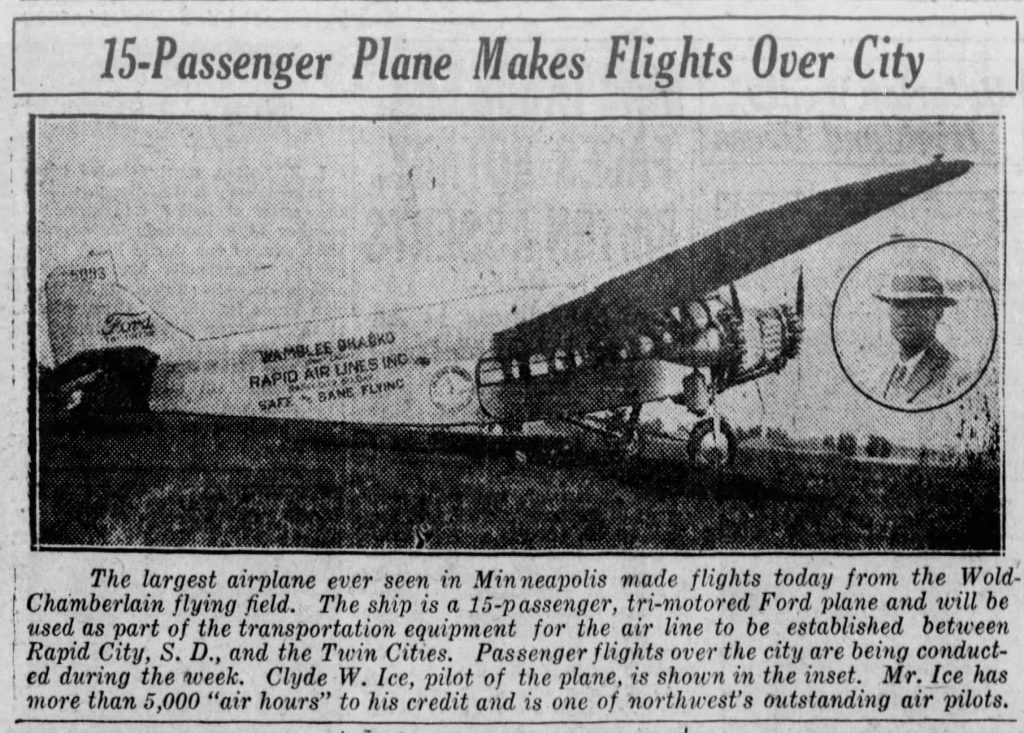
In the spring of 1928, Rapid Air Lines purchased an all-metal Ford Tri-motor passenger monoplane that held 15 people. Clyde and a mechanic went to Detroit to learn about the plane. Henry Ford suggested that he consult with him and help with building the plane. It rolled out of the factory on May 28, Clyde’s birthday. It was the 20th ever produced.
The specifications of the plane, which had been in production for 60 days, are a bit blurry, as every one seemed to report them as being slightly differently. The approximate wing-span was 70ft. to 80 ft. It had an estimated 540 horsepower and could go up to over 100 miles per hour.
The interior was just as impressive. It had blue leather interior and wicker seating. Clyde named the plane the “Wamblee Ohanko,” which means Swift Eagle in the Sioux language.
By the time the plane was complete, Rapid Air Lines already had 8 Eaglerocks and were getting a sister-ship of “The Spririt of St. Louis” and a Fairchild cabin plane. However, Clyde was committed to the plane that people described as “gigantic.” It was not only much larger, it was also a much different plane that the ones that Clyde had previously piloted. But, again, he simply got in it and flew.
On Tour
Clyde immediately started a12-month tour of the United States and Mexico. The tour was to advertise for Ford and Standard Oil, with the overall goal of increasing the interest in aviation. He flew to fairs, exhibitions, expositions, round-ups, rodeos, and just about any other type of celebration that you can imagine. He started out in Detroit, Michigan and headed to nearby Buffalo, New York where he flew people up over Niagara Falls. It was estimated that 10,000 people attended. It was the biggest crowd since Lindbergh had stopped in Buffalo after his famous transatlantic fight.
Clyde said that he could just smell money those first few days. Everyone wanted a ride in the big plane. Most had never seen a bird that big. After the first 10 days, he paid the city $1,100 for oil, gas, storage, and other fees. Then, he sent home $13,500, which in today’s dollars would be just over a quarter of a million. One day, he flew for long hours and made $2,550 in a single day!
New Landing Field
Rapid Air, Clyde, and Ford started making arrangements for Clyde and the tri-motor to visit various locations. He told family in Indiana that he would visit there if there was a place to land. Well, they didn’t have a landing strip, but they did find a field where he could land. Clyde spent quite a bit of time there talking to various groups about aviation and the locals decided that they really needed an landing field. They decided to move forward with building an airport and Clyde donated $200 to the project.
Around The Country & Beyond
Clyde spent most of the next year flying around the United States and Mexico advertising aviation and making money mostly from tourist rides around the city and short-distance charters. He started a scrapbook, which eventually showed that he had been to all 48 states, Mexico, and Canada. Some places Ford or a dealership in the town would sponsor rides. In that case, people buying new cars while Clyde was in town got free rides.
People riding for the first time described riding in the tri-motor as “like riding in a motor bus.” It was also described as a “sky buggy.”
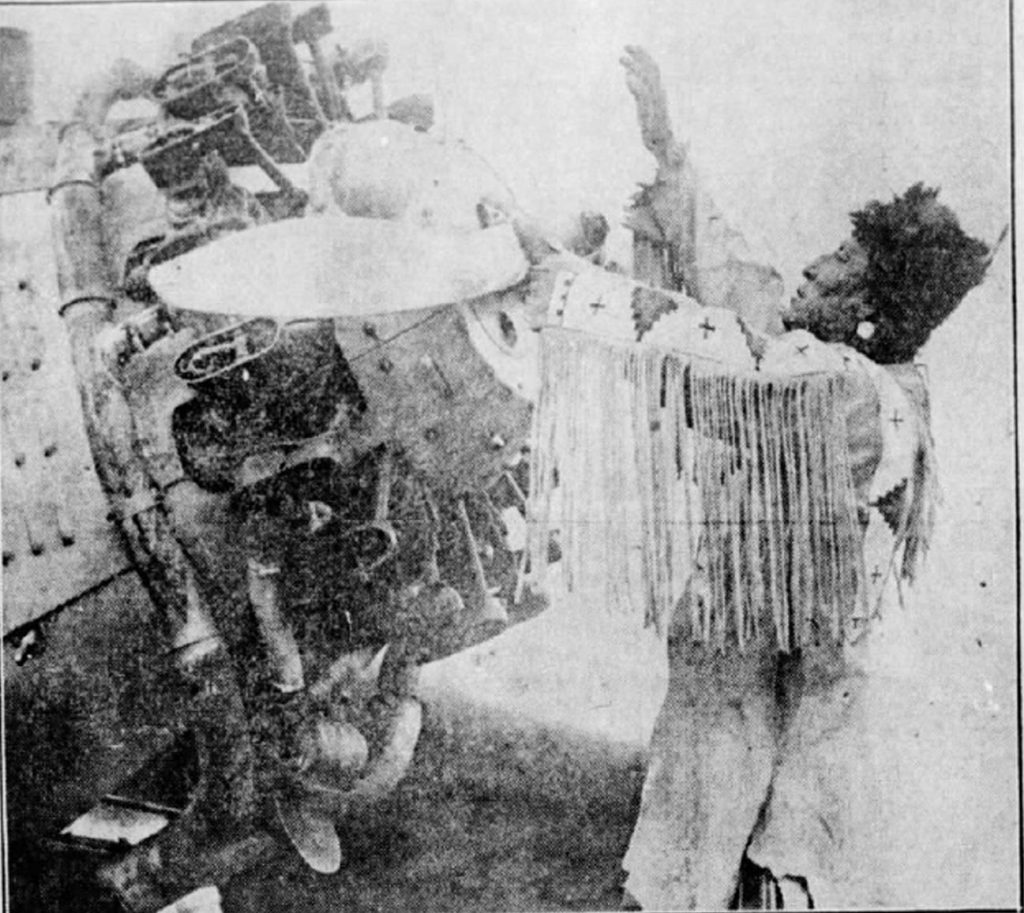
A Member of the Blackfeet
One day, Clyde took 24 Blackfeet Indians up for rides on the plane. Before the members of the group could board the plane for take off, the prayers for a safe flight were said and medicine men prayed to chase the rain clouds away.
Among them was Two Guns White Calf (son of an Indian Chief) who claimed, despite the artists statements to the contrary, to have been the model for the Buffalo Nickel. Two Guns was the only one of the group that had flown before. However, this plane was very different than the plane he had previously flown on. He was so impressed that he made Clyde a member of his tribe, the Blackfeet. Clyde was given the name Pe-Tek-Ma-Wa-Ni, which translates to Chief Who Flies Against the Wind.”
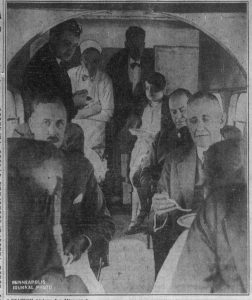
“Cloud Luncheon”
In many locations, people wanted to do something unique with the plane. They wanted to be the first to do some activity in flights. One such occurrence was the day they held a lunch while in flight. The chef and a waiter joined the business men on the flight. It was one of the earliest, if not the earliest, meals served to passengers on a plane. The Minneapolis Journal referred to it as a “cloud luncheon.”
In-Flight Movie
Clyde also claimed that he was the first to pilot a plane that successfully showed a motion picture while in flight. After the flight that evening, the Omaha Evening Bee-News predicted that “Someday at the municipal airport you’ll hear the announcer: Des Moines, Chicago and all points east. Plane on the first runway showing Colleen Moore in her latest production.”
The Most Unusual Passenger
The largest passenger that Clyde flew while he was on tour was also his most unusual passenger. Dazzler weighed in at 1,502 pounds when he headed to the airport in Omaha, Nebraska. Clyde was going to attempt to fly the huge hog to the Iowa State Fair. A few challenges awaited him. First, they removed all the seats from the plane and built a crate inside the plane for the hog. Then, there was the matter of trying to get the hog to back into the the plane. They decided backwards was better so that upon arrival Dazzler could just head out of the plane. This was complicated by the fact that Dazzler was 54 inches high at highest point and 8 feet long. It required a lot of pushing and prodding, but the men finally had Dazzler crated in the plane.
The next challenge was getting off the ground. The plane was carrying quite a bit of weight and every time Dazzler moved it greatly affected the plane. Still, Clyde got the plane off the ground. Upon arrival, Dazzler walked right out of the plane. Now, when someone says, “When pigs fly!” You can reply, “They already did!”
Regarding the event, Clyde remarked, “I guess I carried the first eggs and cream to market by plane, had the first stowaway, and a few more things, but I’ve never had this kind of a hog in my ship before.” Rumor is that Clyde took in $500 for that 150 mile trip.
Other Events
Other events during his tour include scouting areas for future mail and passenger routes, bridge games, and at least one wedding with the entire wedding party on the plane. These might have been firsts for Clyde, but they would not be one time events. For instance, he flew for several weddings.
Clyde was also a pioneer in night flights. When in larger cities, he would take passengers up so they could see the cities at night. Creative solutions had to be used to see the landing strip. One option was to have kerosene soaked rags burning in barrels along the runway. Adding to the adventure was Tail Wind, a Boston Terrier, that joined him during the tour.
Under Fire
During the winter months, Clyde primarily flew in Mexico. The claim was that he landed at every airport in Mexico, but I could not find details of his schedule that winter. However, one interesting flight was recorded. Clyde was flying between Colima and Guadalajara. It was just him and one other member of his team. As they flew, Clyde and his companion saw armed men on the ground. They thought the men were sending up smoke signals.
They wondered what that was all about, but started to fly on until they saw return smoke signals. They decided to swoop down to get a better look. When they did, the bullets started flying. They got out of there as fast as they could, ducking behind a piece of the mountain and hitting the gas. Still, the plane was hit multiple times. Fortunately, nothing that prevented them from high-tailing it out of there was damaged.
Later, after they landed and their heart rate returned to normal, they learned that the rebels had started attacking the town about 15 to 20 minutes after they took off. They had completely taken over the town and 7 people had been killed. Clyde figured that if they had been captured that he would have had a gun at his head forcing him to attack Mexican troops.
Thus, a bodyguard and a guard for the plane were a must.
Meanwhile . . .
While Clyde was out barnstorming around the Western Hemisphere in the Ford Tri-Motor, others at the company were taking care of business back home. By the end of 1928, Rapid Air Lines had flown 65,000 passengers over 202,000 miles. They had 12 pilots and 11 mechanics and had made over 7,000 flights.
Business was exploding. The company had twice a week passenger service from Rapid City to Gillette, Wyoming. They also had service between various points in South Dakota. Beyond that, they had big aspirations of expanding to Minneapolis, Chicago, Omaha, Kansas City, and Winnipeg, Canada.
Additionally, so many people were interested in learning to fly, that they established the Black Hills College of Aviation, which had 25 students in 1928.
Back to Business
Clyde came home to South Dakota in April, 1929. By this time, the company was worth nearly a quarter of a million dollars. Operations had expanded from Rapid City to also include Watertown and Huron, both in South Dakota. Passenger service between Watertown and Rapid City was starting in May. The growth was a combination of all the exposure the company had gotten with Clyde’s tour, money made on the tour, and hard work by the other members of the company in expanding operations.
Still, Clyde had more touring to do. Clyde led a tour across South Dakota leading army planes and private planes as they dedicated multiple airports in the state. It was estimated that 25,000 to 30,000 people saw the festivities.
The company continued to grow. There was talk of lots of different routes. Many of them never came to fruition. However, expansion did occur. The company now operated 18 planes with taxi service, sales, pilot training, and more.
New Headquarters
In October 1929, the company moved their headquarters to Omaha, Nebraska. The location was more central and had or had been promised major east/west routes landing in the city. The president of the company thought that Omaha was positioned to become a major aviation center.
In Omaha, the company created two more subsidiaries to add to their portfolio. The related companies now included: Rapid Air Lines, Pionair Lines, Dakota Air Lines, Rapid Aviation, Rapid Air Transport, and Halley Aviation Management. They had operations in Rapid City, South Dakota; Watertown, South Dakota; Huron, South Dakota; Sioux Falls, South Dakota, and Omaha, Nebraska. They also opened passenger service between Omaha and Kansas City, Missouri and provided service and repair for airplanes.
During this period of growth, Clyde was off barnstorming and taking part in air shows, which were sometimes referred to as a flying circus, in the Ford Tri-Motor. He spent a lot of the time in Oklahoma and Texas trying to increase interest in flying in those areas. However, he also journeyed to other states, including South Dakota, North Dakota, Nebraska, and Montana.
Resignation
Clyde resigned from Rapid Air Lines on October 31, 1930. The story that was told was that he was going to leave Omaha and move to a farm with a landing field west of Rapid City. He was going to primarily be a farmer.
In reality, Clyde had been being courted for the last few weeks by an airline company in South Dakota. He was leaving Rapid Air Lines to take over as manager at Belle Fourche Air Lines. In this role, he would manage the airport and provide pilot training.
It would be a long time before farming became his primary career.
 Without Clyde Ice
Without Clyde Ice
The April after Clyde resigned, Rapid Air Lines sold the Wamblee Ohanko to two men in Kansas City, Kansas. You wouldn’t think that a sale of an airplane would be news coast to coast, but it was. Articles told about how well known the duo of the Wamblee Ohanko and Clyde were.
The president of Rapid Air Lines died suddenly in 1932. The company merged with Hanford Air Lines in 1935.
During a forced landing at Metz, Missouri on April 17, 1942, a wing was torn off the Wamblee Ohanko. The damage could not be repaired.
Belle Fourche Air Lines
Within a few days, Clyde took over management of Belle Fourche Air Lines. He was both manager of the airport and chief pilot.
By the end of the year, Clyde was offering a taxi service and training in a new 4-passenger Waco bi-plane. He was also the distributor for Waco Aircraft Corporation for the State of Minnesota.
On Christmas Day, Clyde flew over 14 towns and dropped greetings on fine parchment that said, “The people of Belle Fourche extend to you, our neighbors, their sincere friendship and best wishes for a Merry Christmas and a happy and prosperous 1931.” It was signed by the president of the chamber of commerce and the head of the Black Hills Roundup.
In January 1931, Clyde bought an Imperial Birdwing plane. The next month, he set out to go barnstorming and vacationing in Minnesota, South Dakota, and Nebraska.
In May, Belle Fourche Air Lines obtained a Ford Tri-motor plane similar to the one Clyde had flown with Rapid Air Lines, which Clyde named the “Black Hills Hawk.” As an introduction and to collect money to purchase the plane, the two-hour flight, which would regularly cost $25-$30 was offered to locals for $10. A goal of 100 tickets was set.
The intent was barnstorm around the U.S. and Canada to advertise the Black Hills. To assist in the advertisement, “Black Hills of South Dakota” was printed on the plane and racks were installed next to each seat to hold advertisements for the Black Hills.
Belle Fourche Air Lines organized an air circus in Brainerd, Minnesota. Clyde both flew in the circus and managed the participating planes. His brother George joined the act and the group was billed as the “Black Hills Flyers.”
Rochester
It isn’t clear exactly why or when Clyde left Belle Fourche Air Lines. However, in the fall he announced a flight from Rochester to Chicago for the Notre Dame – Northwestern football game. And, by December 12, he had a new Waco plane and stated that he would be providing air taxi service out of Rochester, Minnesota. It is unclear exactly who he was affiliated with while in Rochester, possibly Rochester Airways or Northwest Airways.
Although Clyde was open for general business, he did a lot of flying patients to and from Mayo Clinic, which was located in Rochester. He also took doctors on consultations or house calls. For example, when a large land owner was having heart issues, he flew a heart specialist to Rapid City to consult with his doctors. He then flew the doctor all the way to Wheeling, West Virginia, making the trip in 9 hours and 15 minutes with two stops.
During this time, Clyde regularly made trips between Rochester and Minneapolis. However he also flew to Michigan; Des Moines, Iowa; Omaha, Nebraska, and even to New York. He had times that he would be one place and get a call that he was needed somewhere else. One time when a man who had been hospitalized at Mayo Clinic for an extended period of time learned than his young son had died, they put him in a cast and Clyde flew the man and his doctor to family. They then immediately flew the man back to the hospital. The flights took longer than the time the man was with his family.
Racing and Barnstorming
By the summer of 1932, Clyde was again piloting a Ford Tri-motor and offering cruises over the Black Hills and doing air shows. At the Brainard, Minnesota air show, he offered flights to International Falls, Canada and Winnipeg, Canada. A newspaper also hired him to give free flights to anyone who got enough people to subscribe to a newspaper. He also gave rides to winners of kids contests (e.g. the winner of the model airplane contest). By September, it was estimated that Clyde had reached one million passenger miles in a Ford plane.
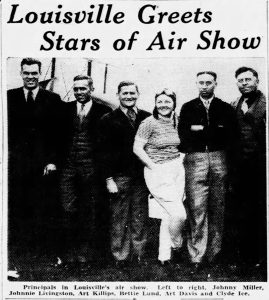
National Air Race
Clyde headed out to the National Air Races in Cleveland as he was one of the organizers of the American Air Race Association. After the races were complete, he went on a barnstorming tour with several other well-known fliers that were also at the National Air Race.
It was said that Clyde was the oldest pilot of a Tri-Motor who was living and it was speculated that he might have carried more passengers than any other pilot to date. Additionally, he was thought to be the only one (or only one of a very few) pilots that attempted to do stunts in a Tri-motor. He could do almost every stunt smaller planes did. He could fly at really low altitude, did zooms, dives, and banks. He didn’t, however, do loops in the Tri-motor.
Clyde and his wife spent five months traveling around the southeast during the winter months. Part of the time he performed with the others touring. Other times he gave short flights over the area or gave excursion flights over the Smoky Mountains, Chimney Rock and other locales.
In October of 1933, Clyde relocated to Minneapolis, accepting a position at the Northland Aviation School.
Watertown Airways
The following September, Clyde and some other men incorporated Watertown Airways with $25,000 in capital. They again planned to promote the Black Hills.
They hoped to have mail and passenger routes between the Black Hills and the Twin Cities. And, again asked the local area to commit to a certain number of tickets. The Original plan called for $59.50 for a round-trip ticket for the entire line with one-way being slightly higher than half of the price.
The plan was to start by the end of the year. However, new rules required emergency landing fields every 50 miles, preliminary flights now had to be taken and approved, and new equipment was required for passenger planes on regular routes.
After five months of planning, updating, and getting approvals, the airline was off the ground. This time Clyde was flying a Travelair. Rules specified limits to flying hours each week. So, in September 1935, Clyde’s brother George took one of three weekly trips.
It seems the route lasted only eight months. The Great Depression was still in full swing and money was tight. It was a very difficult time to start a business. They had reduced the fares on the route, likely to try to attract more customers. Clyde had reduced rates for short entertainment rides as people didn’t have $5 for entertainment. That is why he created pricing of 1 cent per pound and offered flights at varying prices depending upon people in the areas’ ability to pay.
Mercy Flights
Living in an area of wide-open spaces with a significant distance to large cities, Clyde flew mercy flights of every type imaginable. He searched for people who were lost, flew medicine and supplies to people that were stranded, helped rescue people, flew people with medical emergencies to hospitals, flew people that needed more complex care to Mayo Clinic, flew doctors to patients, flew people to their properties when the roads were closed, flew to check on cattle, and more.
Clyde even assisted in manhunts for criminals and searches for planes that had crashed. Clyde claimed to have been on the scene of quite a few plane crashes. Even though air travel was already considered the safest form of travel, many more planes crashed in those early days than today. One larger crash was when a Western Airlines Convair crashed in bad weather. The search was organized out of the airport Clyde managed. He was among one of the very first to give an account of the wreckage.
Weather
Wind, rain, ice, snow, and fire could all lead to a call to Clyde. When a storm started two small forest fires, Clyde and a forest ranger went up in Clyde’s plane to check the area for more fires.
On the other extreme, Clyde was called when the river jammed up with ice. Clyde flew over and dropped dynamite into the river. He succeeded in getting the river to flow. However, people immediately became concerned about possible flooding downstream.
Fortunately, no flooding occurred. However, not every person he was trying to help survived. Still, many survived who might not have if Clyde hadn’t been there to assist them. He believed that airplanes should be used for the betterment of mankind. Thus, he always did his best to get people in need help if at all possible.
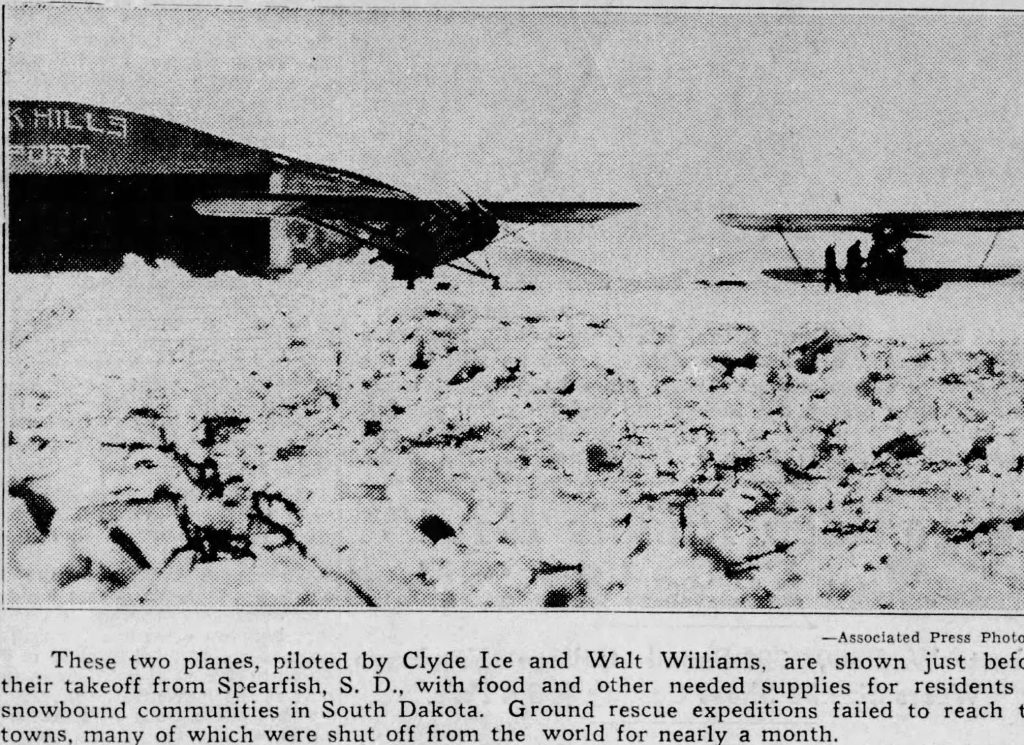
1936 Blizzard
In 1936, a major blizzard with days and days of snow ranged across the Dakotas. Roads were blocked by huge drifts as were train tracks. People on ranches and in small towns were completely cut-off from the outside world as many of the telephone lines were also down. This went on for an extended period of time. People were getting desperate. Food supplies were dwindling as was fuel for heat. Many of them had started burning anything they could find – furniture, books, pieces of their house, etc.
The only way to get much needed food, medicine, and other supplies was by air. Clyde flew mission after mission to get supplies to people and in some cases to fly people to bigger towns. People audibly cheered when they saw Clyde and his plane landing often on the main street of town.
Town of One
One woman was undoubtedly the person most excited to see Clyde. She was a widow and lived in a tiny town. It only had one other inhabitant who was a retired missionary. After two weeks of being snowed in, she awoke to realize that the man’s home had burnt. She investigated and learned that he had died in his bed in the fire. She gathered what remained of the man so that he could be buried.
The woman was now all alone. Two weeks later, while still stranded, Clyde landed his plane and she was ecstatic! After learning of the situation, Clyde assisted the woman and then flew the remains of the man to law enforcement for proper handling.
Missing
It was during this storm that Clyde went missing for two days. It had been snowing and he started to follow one river, then tried another, and tried another direction. The snow did not let up no matter what direction he turned. So, he turned back to a field that he had identified as the best place nearby to land. He landed safely, but he had no way to contact anyone.
People were worried that he had perished in the storm. They worried that even if he landed that he would not have enough gas to run a heater for an extended period of time. However, Clyde came out of the ordeal unscathed, having landed near a ranch house. Contact was not possible until telephone service was restored. As soon as the weather cleared enough, Clyde was back in the air and back to doing more mercy flights to the people in the region.
 No Snow Day
No Snow Day
In a bad storm in 1944, a boy had been staying near the school during the week and going home on weekends. Apparently, snow – even feet of it – was no excuse for missing school. His parents got him to school on foot, by horseback, by snowplow, and other means. One week, the snow was too deep for every other method. So, Clyde was called to ferry the young boy to school. Clearly, education was very important to his parents.
Around the same time, Clyde also flew service men to transportation centers to return to the service from leave or to get those who had been called to serve to their required location on time. Again, the weather was no excuse. Your reporting date was your reporting date.
Black Hills Airport
By December 1936, Clyde was a pilot for Bluebird Air Service at Chicago Municipal Airport. However, he did not stay in Illinois long.
In October 1937, Clyde became the chief pilot at Black Hills Airport near Spearfish, South Dakota. Clyde, who was also a licensed radio operator, was to be the radio operator and weather observer for the airport. He supported Wyoming Air Service, which had a contract for a Cheyenne, Wyoming to the Black Hills to Huron, South Dakota air mail line. Again, updates were needed to meet new federal requirements with the most significant update being lengthening the runways.
Then, in July 1941, a new federal communications station was added to the airport. To make room for the new equipment, various changes were made. Clyde, who was manager of the airport, along with his wife and daughter, had to move out of the administration building at the airport. They had lived on-site and with the changes, they had to relocate to an apartment.
 Where the Antelope Play
Where the Antelope Play
Clyde won the contract to fly a game warden and an expert to do an antelope census from the air. The reason for the census was to see if they could open hunting the animals to a limited number of hunters. I don’t know how they kept from double counting the antelope, but they came up with a number of approximately 9,500.
While counting antelope, Clyde observed two groups of antelope. One had approximately 60 in the group and he thought the other was slightly larger counting approximately 70. The groups apparently couldn’t see each other due to a ridge and ran full steam ahead into each other. They were “piled like football players” at the end of a play. Clyde was sure that some of them had been killed in the collision. However, they all got up and walked away. It made the game wardens wonder if they needed traffic lights for the antelope. This story went nationwide and was even printed in papers in England.
Inland Air Lines
Wyoming Air Service made stops at the Black Hills Airport. Both mail and passenger business were available at the airport. As of 1939, both services were increasing. Then, in 1940, Wyoming Air Service changed their name to Inland Air Lines be more descriptive of the territory that they covered.
Still, the airline had its ups and downs. Although business was brisk in the warmer months, they had to offer specials in the colder months to get people to fly. Likewise, when WWII started, rules kept changing as did routes and the number of routes – two flights each way, only one, air mail, no air mail, etc.
Clyde was the Inland AIr Lines manager for the airport. So, he had a lot of things to juggle.
Stormy Weather
In addition to Clyde’s duties at the airport and for Inland Air Lines, he was still flying private charter flights. When one woman needed to reach the area, she flew on a larger plane to Rapid City. They told her that it wouldn’t be wise to fly on in a small plane due to the weather. But, Clyde agreed to come get her. It rained, it hailed, and stormed a lot. They zig-zagged this way and that to avoid the worst of the storm. At one point, she asked Clyde if they could land. He said that they could, but that he didn’t want to land. When they arrived, she praised him as a marvelous pilot. He had gotten her where she wanted to go – safely.
Flight Training
Flying Clubs
In 1939, the Black Hills Flying Club formed. The club members went together to purchase a Taylor Cub airplane. They shared expenses and Clyde taught them to fly. When they soloed, people came out to watch them. It wasn’t long before the club started talking about buying another, possibly larger, plane.
They targeted having twenty people in the club. However, interest was strong and by the next year, another club formed with the same type of agreements. Clyde was again their instructor.
The first club incorporated and Clyde served as one of the directors.
After WWII, a unique flight club was formed. It was made up of all women.
Show Off?
Being a local celebrity, at homecoming, he got to throw out the first football – from his plane. He flew low and gave it a toss. However, it lodged on the plane. So, he landed, retrieved the ball, and made another pass. This time the ball with the gold and purple streamers (school colors) landed on the 50-yard-line.
Clyde might have tried hard to perfect his throw, do a stunt, or win a race, but he said that a pilot should never try to “Show off.” He believed that was the cause of many crashes.
Civilian Pilot Training
Soon, it became obvious that the United States would become involved in WWII and the U.S. Air force needed assistance in training pilots. President Franklin D. Roosevelt established the CPT (Civilian Pilot Training) program. The need for the program was stated as being prepared for a national emergency and to grow private flying.
Clyde was contacted to teach young men the basics of flying. Thirty-two men signed up immediately and he expected to have up to fifty sign-up. The ground course was taught at the local school with 72 hours on the fundamentals of flying. It was followed by 35-50 hours of flight instruction. The students paid $40 and the government paid $20 toward ground instruction and $270 to $290 for flight instruction.
Clyde became a flight examiner for Civil Aviation Authority (CAA). To get a CAA, the student had to do the groundwork, solo at least 35 hours, pass a written exam, and pass a flight test. If they passed they could be a private pilot, but they could not carry passengers.
Secondary Course
In January 1941, a secondary course was added to the pilot training. Students that passed the first (primary) course, could apply to take the secondary course. Those selected also had to pass physical requirements.
The new class required 108 class hours on navigation, airplanes, and aerodynamics and 40-50 hours of flying time. It also meant purchasing a new plane. Clyde purchased a new Waco plane for the secondary class to go along with one he had purchased for the primary course. He also added an additional instructor to teach the secondary course while he continued to teach the primary course.
An instructor refresher course was also added. The course, which was only open to 10 students at a time, required that the students have at least 150 hours of flying experience. However, some of the students had almost 1,000 hours of experience. Still, they were required to fly an additional 60 hours as a part of the course. The additional flights included training on night flying.
Cross-Country
It wasn’t long before Clyde received a telegram telling him to plan for an additional training level. This training would require 5 weeks of study for apprentice instructor. It was to be followed by 3 months of cross-country flying to various locations. Each student would spend 40-50 hours as a pilot, 40-50 hours as a navigator, and 40-50 hours as a radio operator and observer.
To qualify the student would have to complete the primary and secondary courses. Then they would complete the apprentice instructor. After completely that study, the students could take the cross-country course.
New planes needed to be purchased for this training as cabin type planes with all the latest instruments were required. And, of course, additional instructors were needed.
Students that completed the course would be eligible for an instructor’s rating and could obtain a commercial license.
Plans were also being made for training on flying based on instruments. And, the chatter said that training on gliders might also come to the Black Hills Airport.
Women Fliers
At one time, the government offered 8 scholarships for people learning to fly. Clyde went in with the Jaycees to provide an additional scholarship, which the government matched. Those receiving scholarships were based on preliminary work. The top two students in the group of 40 were both women. However, Clyde was only allowed to give one scholarship to a woman. I assume this was because they really were for training men to go to war. So, one woman ended up nudging out the other woman by one-fifth of a point.
This wasn’t the first woman that Clyde had taught to fly. He described another young lady Miss Neva Esmay as the best student he had ever had. She tried for Civil Aviation Authority (CAA) certification, but did not qualify because she was an inch too short. Not to be deterred, she hired Clyde to give her private lessons. She became a pilot and in time got a commercial license, trained to be an instructor of instrument flying, was a parachute rigger, and even did stunts in planes.
 Devil’s Tower
Devil’s Tower

A former Hollywood stuntman and parachutist made a bet that he could jump out of a plane and land on top of Devil’s Tower. He landed successfully. What didn’t go so well was the return to the plane. The pilot returned to the area and dropped a 1,200 foot coil of rope, but it went over the side of the rock formation landing on a ledge some 40 feet below. There was no way for the man to climb down.
Someone was stranded. So, of course, Clyde jumped in his plane and headed to Devil’s Tower. However, it was foggy in the area of the rock formation and Clyde had to wait for the fog to lift before he could deliver some supplies to the man. Fortunately, before dark, he was able to drop blankets, oranges, candy bars, and a thermos of coffee.
The man had to deal with rain off and on during the night. Clyde dropped him more rope, but it tangled so badly that the man could not use it. Also, the grappling hook that he dropped was damaged in the fall. Clyde dropped him another rope that was tightly wrapped to keep it from tangling, along with a pup tent, more food, a hatchet, rubber-soled shoes, a megaphone and more.
Mountain Climbers
Meanwhile, expert mountain climbers were called to the scene to try to get him down from below. It was critical to get him down soon as wet cold rain was moving into the area and snow could make the rock unscalable for an extended period. In preparation for colder weather, Clyde dropped a fur-lined flying suit to the man.
Three nights on the mountain, lots of work and preparation going on, but no real progress and the rock formation was more challenging than the mountain climbers had anticipated. Additionally, the man had to drink fruit juice to stay hydrated because every attempt to drop him water failed. Still, he was doing okay and drawing a crowd. By now, there were about 1,000 onlookers. Every cabin in the area was booked. The shelves of a nearby store were bare. The event was described as “better than a 3-ring circus.”
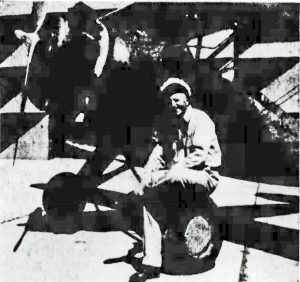
Daily Missions
The public had plenty of ideas on how to get the man down. Some people and the parachutist himself worried about the climbers and Clyde. Nobody wanted anyone hurt trying to rescue the parachutist. Through it all Clyde remained calm, flying over the relatively small target and tossing packages out.
He did have some help. One of his best students, a tiny young woman flew many of the missions over Devil’s Tower with him. They took the door off her side of the plane and she tossed the packages out. He did some missions alone, but that was quite challenging, especially since throwing packages and dealing with wind shifts caused by wind hitting the rock formation challenged even the best of pilots.
Dealing With Wind
Fortunately, Clyde knew about the wind currents. He also knew that he had to get relatively close or the packages would miss their target. His technique was to fly high enough to avoid the air currents. Then, he shut off the motor and would glide in. As soon as he was close to the top of the rock, he would hit the gas and take off. At the very moment that he “gave it the gun,” the tiny woman beside him would push the package out of the plane.
Clyde did have one near accident on his daily flights. He flew up with a reporter from the Omaha World-Herald. They hit one of the air currents and dropped fifty feet. Clyde hit the instrument panel and the roof while the reporter was knocked completely out for a short time. The reporter stated that “the gale and rain . . . tossed the small plane like a cork on a stormy sea.”
Clyde made several of these trips every day for six days, using a field about 4 miles away as an airfield. It was much easier for Clyde to make multiple trips each day than the bigger planes as they had to land 50 miles away.
Before the ordeal was over, Clyde was even delivering letters and telegrams to the rocky top. Clearly, the mail service was faster in those days.
The Rescue
Finally, the man was rescued by the climbers. He hadn’t rescued the man, but he had kept him alive and comfortable until he could be rescued. The man had actually gained weight from all the food that Clyde had taken him.
A few years later, Clyde helped a rancher design an actual air strip near Devils Tower. The rancher planned to let other ranchers in the area use it for various needs. He also thought that pilots coming to see Devil’s Tower or flying through, could also use a place to land.
War Days
After Japan attacked Pearl Harbor, airports throughout the country went on alert. Initially, lots of pilots were grounded. Clyde had to rush his prior student Neva Esmay her birth certificate. She was in the process of picking up a new plane for Clyde and they wouldn’t let her fly it back to South Dakota without the additional identification.
The government required that the airport be guarded. So, people volunteered to helped guard the airport. Clyde also asked Ft. Meade for protection at night.
Civil Air Patrol
Clyde was named a commander for the Civil Air Patrol although some later references state that he was squadron leader. A commander was in charge of coordinating all air activity in the area as well as working with civilian defense groups. It may be that Clyde had too many responsibilities to coordinate activities across nine counties and stepped down a notch. The information found isn’t clear.
In any case, he was very involved in defense training for the area. The leaders and people they recruited trained on first aid, combating incendiary bombs, radio communication, emergency transportation, and more. At least two of his sons were also very involved in the Civil Air Patrol.
Airport Rules
Rules continued to evolve. For example, express mail now had to go through the express office. Previously, it could go through the express office or simply be dropped off at the airport.
The day after Valentine’s Day rules went into effect that stated that an airport must close unless 24-hour guards with at least two at night per hangar were provided along with having an airport manager, a clearance officer, and a deputy clearance office. Planes at other locations were required to be dismantled as their was fear that the enemy might use them for sabotage, bombing raids, or aerial photography. The only Midwest airports that were open to civilians were Denver, San Antonio, and Black Hills Airport at Spearfish, South Dakota. (not sure how they defined Midwest)
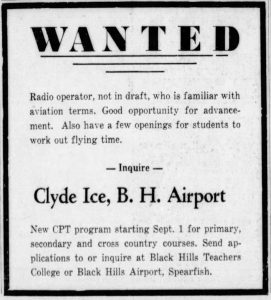
Training for War
Training pilots became even more important the day after December 7, 1941. Clyde, however, had no problem finding students. The government was amazed at how quickly he could fill his classes. Despite having plenty of students ready to learn, the government kept Clyde in a hurry up and wait state. They often told him to prepare for another class or a new type of training. And, then he would wait and wait for the government’s approval to actually move forward.
Still, plenty of expansion occurred. The airport was expanded to 800 acres. In part, this was to accommodate bombers as the airport was to be an auxiliary base for them. Additionally, the number of pilots that needed to be trained was expected to increase. Thus, Civilian Conservation Corps’ buildings were moved to the airport to provide offices, a lobby, and barracks for students.
Clyde kept busy overseeing the flight training in Spearfish. By the summer of 1942, they had 18 training planes and 18 instructors. Clyde’s brother George was an instructor at the flight school. His son Cecil, who like his brothers had been flying since he was a small child, received his instructor’s license for the Civilian Pilot’s Training Program at age 19. He was one of the youngest, if not the youngest instructor not only at the flight school at Black Hills Airport, but anywhere.
Flight Instructors
A new requirement meant that the school had to give up one instructor per month to the U.S. Army Air Corps. Clyde thought that soon it would be very difficult to find instructors. His secret weapon was to hire some female instructors so that he could keep them long-term.
As a result of the demand for instructors, they were also recruiting instructor pilots. A person with a Civil Aeronautics Authority (CAA) commercial or private license between the ages of 21 and 42 could train at the Army Air Force School. They had to pass the war department’s physical for pilots and have unquestioned loyalty. Once the students passed the training, they became instructors or were assigned other non-combat duties.
Programs
The training program kept shifting based on the requirements of the government. In September 1942, a new group of students began training. The group included 15 elementary (previously called primary) level students, 20 secondary students, and 6 cross-country students. The cross-country students flew a Stinson and learned navigation, meteorology, and flight procedures. They were required to do ground study plus three hours of flight time each day.
The next group had only 5 elementary students. It had 20 secondary students and 12 cross-country students.
Supervision
Clyde was given exclusive supervision of all flight training contracts and the local college was given exclusive supervision of ground courses. The split responsibilities also resulted in changes to resources.
When the Hot Springs airport expanded to create a Civilian Pilots Training Course, Clyde was involved. He donated an old plane that was no longer flyable for ground training. He also equipped the shop. In order to open school, they needed to meet a minimum quota of students, provide barracks, and have a building for ground training. Clyde was to supervise the training and they had to ensure that the facility had all the airport staff required to meet the government rules.
Exactly how broad this supervision was is not clear. However, one article stated that he supervised several locations.
A New Program
In June 1942, Clyde was called to Kansas City regarding a new program with the goal to train 50,000 men in the United States to be pilots. This wasn’t the first time that he had met with government officials regarding pilot training, as he had previously met with officials in Washington D.C. The intent was to have 3,030 primary and 1,470 secondary students for the region, which included Missouri, Kansas, Iowa, Colorado, Wyoming, and South Dakota.
The students could be 18-37 years of age and college was not requited. Room, board, transportation, and insurance was provided by the government.
The total course consisted of primary, secondary, cross country, and instructor training followed by training in flying by instruments. The training for the primary and secondary courses was to be shortened from twelve weeks to eight weeks. It isn’t clear exactly what they sought to remove from each course. However, it was clear that the goal was to get more men trained faster. In addition, the students were only required to meet the physical requirements for a commercial pilot, which was a lower standard than what had been in place.
Cadet Training
The Army decided that Spearfish would be a good place to train men who were already in the Army to be pilots. In order to accommodate the cadets, the Civilian Pilot Training Program at the college and Black Hills Airport was cancelled. This included stopping or not moving forward with plans for secondary, cross-country, and LINK training. However, the students already participating in the program were allowed to complete it.
Primary training would continue, but only for cadets. Thus, a shake up in the instructors occurred as more primary instructors were needed and instructors for the cancelled programs were no longer needed.
The Program
The Army Aviation cadets took basic courses at the college in addition to learning about aviation.
Since they were expecting hundreds of cadets, other changes were also required as they needed a place for the men to stay. To help with accommodations, all of the women were moved out of college facilities and placed in private homes.
Clyde remained the manager and operator of Black Hills Airport. He soon received a letter of intent for him to do elementary flight training for the cadets.
By the time the program ended in 1944, the Air Force estimated that Clyde had trained about 2,000 pilots. I assume those are just the ones that enlisted or were drafted into the Army Air Force as pilots. Some of the pilots that he trained with the civilian program also supported the war as members of the Navy.
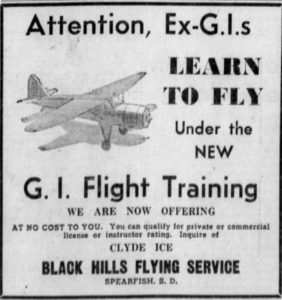
GI Flight Training
Men returning from the service were provided the opportunity to pursue a private, commercial, or instructor’s pilot license at no cost to them.
In 1947, Clyde had a session with 40 students in the flight school, many of them men who had served in WWII.
Black Hills Flying Service
Clyde had started Black Hills Flying Service before the United States got involved in the war. Clyde seemed to be associated with other companies, too. One is Black Hills Transportation Company, which stated that Clyde was owner/operator. It is unclear if this was a separate company or just another name for Black Hills Flying Service.
After the war, Black Hills Airport was leased to Clyde for five years for $2,800 per year. There were only three bids for the lease and two of them were from Clyde. One of his was a graduated offer starting small and growing to about double the stated amount. The other, which was accepted was a flat yearly amount.
Air Taxi
When War restrictions on flying lifted, Clyde started offering a charter service again. Clyde, it seemed, was nearly always for hire even when he wasn’t technically running a charter business. If he was headed somewhere and had an open seat, the seat was usually for sale. Sometimes he was taking someone to their family or flying them on business.
His Passengers
It was said that he took half the governors of the country up in his planes. True or false? I don’t know. However, it is well documented that he did take multiple governors up in his planes. He even tried to get President Grover Cleveland to take a flight over the Black Hills, but he was unsuccessful in obtaining him as a passenger.
Some of his other interesting flight companions over the years included: Miss Rapid City, a photographer who photographed crowds at air shows, Carl Rise who photographed much of the area from the air, and a motion picture photographer who filmed the area.
When sculptor Gutzon Borglum was designing Mount Rushmore, Clyde flew him over the area to do aerial surveys. At times the hills caused air current issues. One time he had to lighten the load because of a down drafts. He flew around and burnt as much fuel as he dared. Still, he scraped the top of trees when trying to fly out.
He was also hired for special assignments. One time he was hired to fly men around who were doing remapping for National Geographic. Another time, Clyde quickly made arrangements when a basketball team couldn’t reach a tournament due to impassible roads. He flew two trips to get the entire team to the tournament and two trips to get them back home.
Company Offerings
By 1946, Clyde was offering a veteran’s training program, private flight instruction, ambulance service, crop dusting, coyote elimination, and charter service to anywhere in the United States. However, flying was becoming more mainstream and with that came new rules from the government. In 1947, each plane had to be licensed.
It is unclear how long Clyde was associated with Black Hills Flying Service. However, a company with this name existed as late as 1979. When new regulations went into effect that year, the company did not apply to continue service.
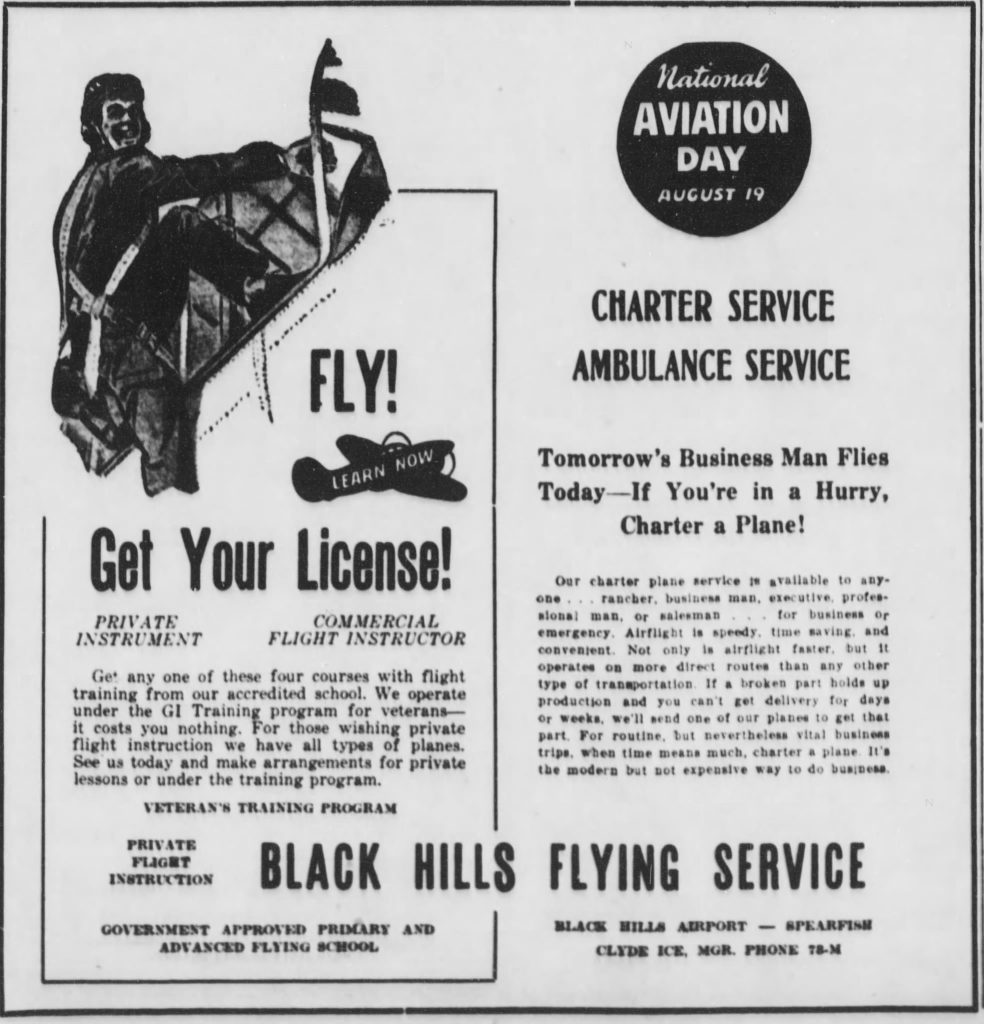
Black Hills Airlines
During the war (1943), Clyde and associates incorporated the Chicago, Black Hills, and Western Airlines. It was to be known as Black Hills Airlines. They started with $5,000 capital. They offered 5,000 shares at $100 of preferred capital stock and 50,000 of other stock at $1 per share.
The company stated that they would provide services via air integrated with surface travel. They also including the manufacture of metal and wood articles as well as real estate and stocks within the scope of the company.
Proposed Routes
At different times, they took proposed routes to bodies that they believed could approve the routes. However, they seemed to have difficulty getting anything approved.
Sioux Falls Line
One line was from Sioux Falls, South Dakota to Rapid City, South Dakota and beyond. Inland Air Lines had stopped passenger service through this area and had talked of stopping air mail.
Their application was denied. They had provided sufficient information, but the commission claimed they didn’t have the power to act.
One of the routes was not approved simply because the body did not believe that they had the power to approve the route. A completely different route at a later date was also not approved.
Chicago – Great Falls Line
In March 1945, they tried to get approval for a line from Chicago to Great Falls, Montana. They initially planned to offer service as far as Billings, Montana. Later, they planned to add the extension to Great Falls. This time, they even had letters from Air Force officials, local leaders, and organizations supporting the line, which would carry both passengers and mail.
The response was that no need existed between Rapid City and Chicago. Other companies proposed similar lines, but they were also denied.
Black Hills Air Lines tried again. They lobbied to have them reconsider, but were ultimately unsuccessful.
Going Nowhere
The company also offered to do airmail for less than Inland Airlines charged. Again, they were unsuccessful in obtaining a contract.
Officers in the company said that they were going to take the approach that they could do anything not explicitly prohibited by law. It is unclear what steps they took. However, it appears that this company never got off the ground, at least, as a regularly scheduled line.
Meanwhile, Clyde kept managing the Black Hills Airport and flying with Black Hills Flying Service.
The Miracle Baby
On March 20, 1947, a winter storm was raging. Winds, estimated to be 60 mph, were whipping the snow around creating whiteout conditions. On a ranch 90 miles from her doctor, a woman went into labor. However, the baby was not due for another 3 months. The doctor feared that without medical assistance, the baby would not make it.
The doctor called up Clyde and asked if he could get him to the ranch. The weather was horrible and it was also the day that Clyde and his wife were going to bury one of their sons and their daughter-in-law, who had been killed in crash of a mail plane that his son was piloting. The doctor had to call twice before Clyde agreed to try to reach the ranch. He really didn’t want to go and later said that he might not have gone had he known how bad it was.
Outbound Flight
Clyde and the doctor took off and flew very low trying to keep the telephone poles in sight, along with highways and creeks when visible. They got blown off course, but eventually found their way back. Fortunately, Clyde knew the area like the back of his hand and he knew there was an old landing strip a rancher had used just up the hill from the family’s home.
As Clyde and the doctor flew over the house, a 3.5-pound baby girl was born. However, the doctor couldn’t immediately get to the baby because the wind kept trying to lift the plane. He stayed in it while Clyde attempted to stake the plane down. The doctor then went as swiftly as possible to the home. He gave care to the baby and mother. The little girl appeared to be healthy, but needed oxygen. Thus, he wrapped her in blankets and they jumped in a car to make the trip up the hill to the plane.
Return Flight
Some local men had arrived to help and they held the plane down until the doctor was seated next to Clyde with the little girl on his lap. As they took off, the men let go of the plane and it is said that the plane was completely airborne within 10 feet – no taxiing needed. They made better time on the flight back and landed at noon. The doctor’s wife was waiting with oxygen and an incubator and Clyde’s family, who had been on pins and needles, gave a sigh of relief.
Clyde stated that this was his most difficult flight in his 70+ years of flying. He was very proud of it. “He said it was the one thing he did that he thought no one else could have. He knew the country kind of by gut feeling.”
Newcastle, Wyoming
In March 1948, Clyde’s lease at Black Hills Airport was cancelled for non-payment. Rather than pursuing money from Clyde, they made a deal to accept numerous payments in lieu of payment. So, after 11 years, Clyde no longer operated the Black Hills Airport.
November 1, 1950, Clyde took over as manager at the Modell Airport at Newcastle, Wyoming. The town was growing due to oil development and the town leaders had sought out Clyde, who had 11 years experience managing Black Hills Airport, to manage the airport at Newcastle.
Good-Bye Black Hills

Hello Newcastle

Flying In Wyoming
When Clyde moved to manage the airport at Newcastle, Black Hills Flight Service, which he owned and managed moved with him. This included moving his small fleet of three four-person planes and three two-person training planes.
Clyde continued offering services similar to what he had provided at Black Hills Airport, including local charter flights, cross-country flights, ambulance service, and hunting/fishing trips. He also supervised the Veteran’s Flight Training Program at the airport.
Despite the city leader’s support for the airport, the first few years at Newcastle were a struggle for Clyde. He had to work hard to build up his business.
However, by 1953 the airport was seeing 30-50 take-offs and landings daily. The town, the airport, and the air traffic were all growing. Likely, crops were also growing as Clyde had obtained a farm.
Another Regular Line
Clyde wasn’t done trying to create a regularly scheduled route. This time, Clyde and his partner wanted to create a regular daily route between Newcastle and Casper, Wyoming. Both towns were oil communities and they felt that demand would exist for the line.
They planned to use a Cessna T-50 and lease another plane until they could obtain a second Cessna. The proposed fares for the route were 7 cents per mile for passengers and 4.6 cents per pound for cargo.
This time Clyde was successful in getting approval for the route.
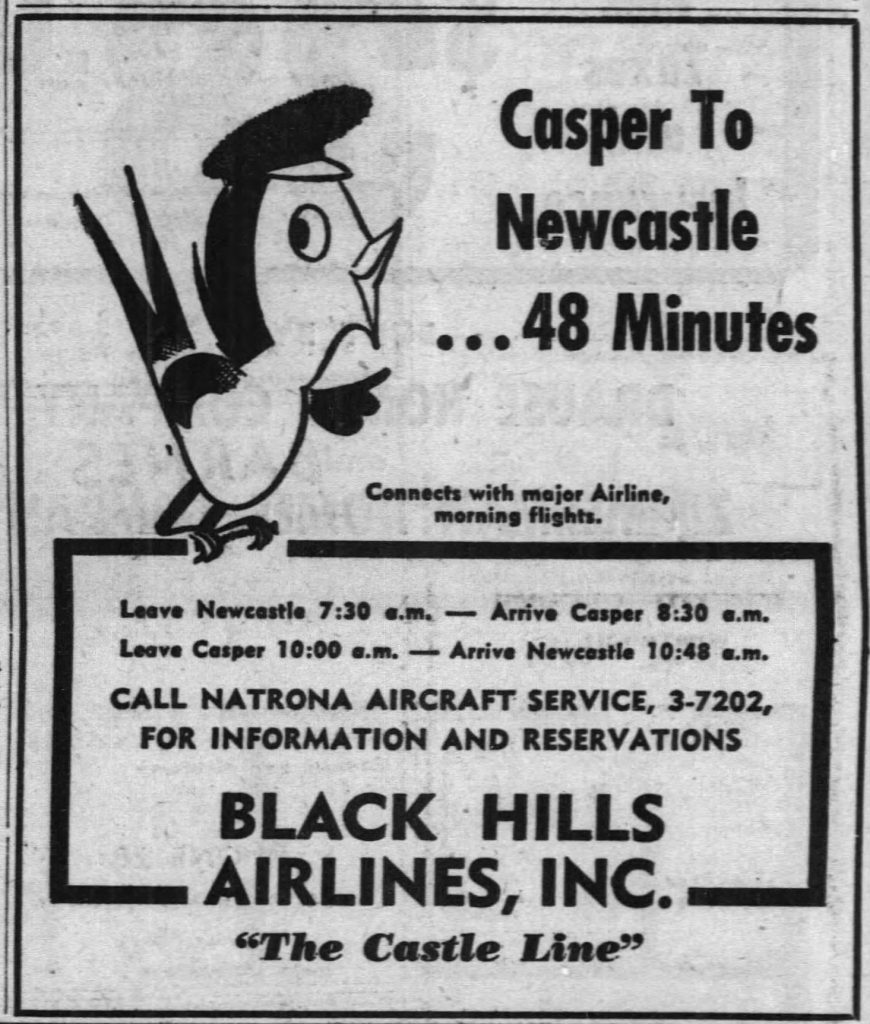
Newcastle Air Service
Shortly after approval for the air route, Clyde and associates filed with Wyoming to create Black Hills Airlines. It was to have $30,000 in capital divided into shares at $1 per share. The company filed to include passengers, mail service, freight, cargo, real estate, and more in their business. They began flying the route under the name Black Hills Airlines although the certificate was in the name of Clyde’s other business Black Hills Air Service.
That summer expansion was under way at the airport with runways being extended. Additionally, tentative plans were being made for a terminal building.
After a few months of flying the route, they discontinued it. Then in December 1954, Black Hills Airlines filed to acquire the rights of Black Hills Flying Service to fly the route. In other words, Clyde filed to have the route he already had, but under the name that they had been using to advertise the flights.
The proposal also included new pricing with passengers paying a flat $10 rate for the flight. 8 cents per pound minimum $4 for up to 50 lbs. However, before the proposal was acted upon, Clyde and his associates filed to change the name of Black Hills Airlines to Newcastle Air Service. This may have been to avoid some legal issues since they had been flying under the name Black Hills Airlines without having the certificate. In addition, Black Hills Airlines was involved in a lawsuit with one of the owners and another person. Therefore, a name change may have helped at least with the perception of the company.
Good-bye Newcastle
In 1956, a highway expansion near the Modell Airport required some land from the airport site. It was reported that the authorities were going to contact each of the owners/leasees of the airport property regarding the impacts on them. However, they stated that they would separately negotiate with Clyde.
Clyde held the lease for the airport, but also had a judgement against him from two years earlier for over $3,000 for leasing the airport. It isn’t clear that there was really any negotiating that occurred as the officials simply terminated Clyde’s lease in August of 1956.
The next may, however, he was still flying out of Newcastle. By August of 1958, however, he was no longer in Newcastle.
Crop Dusting
In 1940, blister beetles were attacking a beet farm. So, Clyde hooked up a sprayer and attacked them from the air. It was his first foray into crop dusting. However, it would not be his last.
In the last half of his life, Clyde devoted a lot of his flying time to using his sprayer to attack bugs and weeds. The weather had to be just right and it wasn’t usually perfect for crop dusting all day long. Therefore, his typical crop dusting day consisted of covering about 100 acres. However, the weather was perfect on his 77th birthday and he covered a record 860 acres.
One year the town where Clyde was living at the time was being inundated by a pest. He agreed to spray the town at cost (today people would throw a fit if he sprayed a whole town with the chemicals that they used).
Clyde Ice Flying Service was sometimes in high demand. He even had a contract with the Department of Agriculture to spray for them.
Clyde was still in the crop-dusting business in his eighties.
The First Recognition
Clyde had been born before the Wright Brothers made Kitty Hawk famous. He had started flying right after WWI. In a sense, he had grown up with aviation. A reporter for the Deadwood Pioneer-Times said that talking with Clyde “is like visiting with a talking history on American Aviation.”
It was estimated that when you added up his time as a pilot and as an instructor that he has spent 4 years (over 35,000 hours) of his life in the air. When asked if he had ever thought about settling down, Clyde replied “I just wouldn’t know what else to do.”
When Clyde was about to turn 70, had 40 years of experience flying, and was still flying nearly every day, people started to notice. He was already a household name in South Dakota and some surrounding communities. In addition, his name had circulated nationwide due to his aerial coyote hunting and association with the “Wamblee Ohanko,” But, now his age and years in the sky started to be more formally recognized and he was the guest of honor at Air Fair Day.
Other Exploits
- Rounded up wild horses in the west.
- Dropped leaflets over multiple towns advertising a “frolic” – a town celebration.
- Flew money between two banks.
- In February 1939 when the East Side Cannonballs took on West Side Screwballs in a basketball game, Clyde “Coyote” Ice suited up for the Cannonballs.
- His perfect target skills were put to the test when a student died during a solo flight. At the close of the funeral, the flying club called upon Clyde to drop flowers on the student’s grave from his plane.
- He flew a 91 year old from Pierre, South Dakota to Salem, Oregon over the trail the old timer had followed when working supply trains during the gold days, including the expedition that found the first gold. They could still see the ruts of the wagons as they flew over.
- At a bond rally during World War II, he dropped a United States flag from a parachute while band played the Star Spangled Banner. At another, he dropped a $25 war bond and $10 worth of war stamps by parachute to kick off a war bond rally.
- He entered 2 planes one year in the college homecoming parade. One was an advertisement for flying and the airport. The other was a part of a freshman class float. Due to rain that day, the field where they had landed the planes got muddy by the time the plane used as a float was ready to be flown out. So, Clyde taxied down Sixth Street and took off down Highway 85 as a large group of spectators looked on.
- When Clyde was in his 70s, he got to go up in a B-57 bomber. Rumor has it that Clyde got to handle the bomber under the watchful eye of a Lt. Colonel, who also had a set of controls.
- When someone asked about flying blind (by instruments), Clyde covered the windshield and took off landing exactly at their destination.
- He claimed at one point that he had flown the length of every major river in the United States except one in Maine and that he had plans to fly that one.
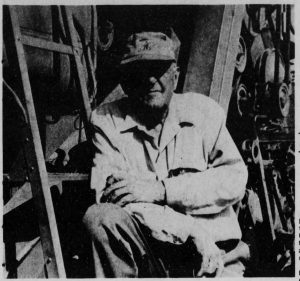
Clyde Ice Day
When Clyde turned 80, members of the aviation community and civic leaders decided to honor him with Clyde Ice Day. The event was held at the Rapid City Municipal Airport and started with a fly-in breakfast. People flew in from all over with 30 special planes being flown in, including two antique planes from Denver.
Flying in his Piper Super Cub, Clyde was the first to arrive at the celebration, which was typical of him as he often arrived before anyone else at air shows and other events. Today, he had slept in until 5 a.m. since he wasn’t going out crop dusting that day. He arrived at 7 a.m. and was ready for breakfast.
Estimates on the number of attendees ranged from 450 to 1,000. In attendance, were 37 members of Clyde’s family, several high-ranking military officers, representatives from the FAA and the Civil Aeronautics Board, stock growers, former students, the first female pilot in the state, and a woman that worked with him as a parachutist and wing walker.
Speeches and Honors
The event was full of speeches by dignitaries. The governor, former governor, mayor, senators, and more spoke. Congressman Berry talked about the many mercy missions that Clyde had flown. Senator George McGovern stated that Clyde was “one of the most colorful and remarkable men in the history of South Dakota.” And, Senator Mundt . . . concluded, “Ice’s 80 years provide an abundance of success stories, but if I had to select one as an inspiration for success I would say he doesn’t know how to quit,” which was true as, at age 80, Clyde was still spraying crops and running an air charter service.
In addition to speeches, Clyde was awarded “almost every type of award possible.” Clyde received a state flag, historic photographs, model airplane, and certificates. The governor commented on his dedication and leadership in aviation. Fifty years of flying without a serious accident was considered quite an achievement. Significant awards were made by the Federal Aviation Agency (FAA), the Flight Safety Foundation, and the National Aeronautics Association.
Clyde also received telegrams and other acknowledgements that were read, including a letter from President Nixon.
Other Salutes
A celebration for a pilot who started flying in 1919, required “snoopy hats and white scarfs” for at least key guests. Vintage airplanes were on display and their was a flyover of a mix of vintage and modern airplanes. Likewise, the U.S. Air Force band seemed appropriate for the event given so many military pilots had received their initial training by Clyde and others on his staff.
Clyde had trained many pilots for the military. Thus, of course, no celebration would be complete without cake. In this case, the cake was a cake and icing model of the Black Hills Airport across the road from his farm in Spearfish, South Dakota.
But, it seems that Clyde cherished the opportunity to reminisce more than anything else. This is not surprising since it seemed that Clyde enjoyed conversation and he loved airplanes. He was always in the mood to talk airplanes, whether it was with young students studying about aviation in school, people wanting to know more about a specific plane, or talking with someone about his adventures.
50 Years Too Soon
When writing about the celebration the Lead Daily Call coined Clyde “South Dakota’s grand old man of Aviation.” Yet, that day when he saw a Boeing 747 take off, he remarked that it was his kind of plane and that he was born 50 years too early! Of course, he wouldn’t likely have been allowed to do many of the things he did if he had started flying in 1969 instead of 1919. He would have had a totally different legacy.
Still Flying
Although Clyde had more or less given up flying in his mid-eighties, he kicked off an air show in 1975 dressing in old-time gear and scattering confetti over the crowd. He didn’t do any trick flying that day. He left the loops and rolls to the youngsters, the oldest of which was almost 25 years his junior. Around the same time, he got to fly Frontier’s 737 flight simulator, which he found interesting and fun.
Surprise Visit
About 9 months before Clyde turned 90, a plane made an unexpected stop at the Black Hills Airport. The plane was similar to the Spirit of St. Louis and was on a tour to commemorate 50 years since Charles Lindbergh’s famous flight. Obviously, the pilot knew about Clyde and his relationship to Lindbergh because Spearfish, South Dakota isn’t someplace a pilot just decides to stop for a quick visit.
After a call was made to Clyde, who lived nearby, he quickly came to the airport. After a short visit with Clyde, the pilot took-off, flying over the airport and rocking the wings before he flew out of sight.
Afterward a reporter for the Queen City Mail interviewed Clyde. The reporter wrote, “To try and interview Clyde Ice in two hours is like trying to wing-walk on a supersonic jet in flight. It can’t be done. . . ” However, the reporter was able to capture pieces of Clyde’s story. He also learned that Clyde might not have completely given up flying. The exchange went as follows:
Clyde do you still fly?
Why not? I run that combine 12 hours a day, drive an automobile 500 miles in half a day, and I can read this telephone book without my glasses.
When was the last time Clyde?
Maybe two years ago.
Maybe, and maybe yesterday, or tomorrow.
(Unclear if the last statement was Clyde’s words or the reporter’s words.)
Edited for length from the Queen City Mail
Flying at 90
At age 90, Clyde was again honored by officials from the Air Force, state, and High Plains Heritage Society as the “Father of Aviation” in South Dakota. On the day of the celebration, he flew with an instructor. Soon thereafter, Clyde passed a flight physical and an FAA check ride with an examiner. He soloed in a Bellanca Citabria “tail-dragger.” It was his first solo flight in six years.
Clyde was also cleared to take passengers up in the skies with him. The only requirement on his new pilot’s license was that he had to wear glasses when piloting a plane.
Clyde said, “I don’t see how things could change as much in the future as they have in the last 60 years, but they probably will.”
When he wasn’t flying, one of Clyde’s favorite places to be was on his fancy combine. He work for the farms in the area. He said it was second best to flying a plane. He also sold oil additive in the winter and often joined his wife, daughter, and son-in-law in Pinedale, Wyoming.
Retirement?
At age 91, Clyde retired as a pilot. He had flown most of 62 years and it was estimated that he logged around 50,000 flight hours. His log books indicated 43,000, but his first log book was missing and Clyde estimated the other book covered around 7,000 hours. Although he did not renew his license, he didn’t give it back. No one was going to get it from him. He had declared that they were going to be his souvenirs and nobody dared challenge him.
Accident-Free
In the entire time he flew, Clyde never had a serious accident. He did have a few mishaps. One I don’t know how he survived was when the wood fuselage of a WWI surplus plane started breaking apart. Clyde ended up flying upside down and then somehow manage to land the plane.
Another time, he was in a plane-car crash on the ground. He taxied into a car that pulled up next to a hangar. However, it resulted in minimal damage. Despite the mishaps, Clyde was proud that none of his passengers ever had an injury that bled. Well, with the exception of the time the coyote attacked his coyote hunting partner while they were in the air, but that wasn’t actually an air accident. Zero accidents is miraculous given he taught himself to fly, did trick flying even in a passenger plane, and flew in some really challenging situations.
Missing? Dead?
Clyde was focused on safety and it had likely saved his life. Plenty of others that he knew, died or were seriously injured in crashes. Clyde had only received a few bumps and bruises over the years. He had gone missing during the blizzard in 1936, but he wasn’t truly missing he was just unable to report his condition.
Another time, he was reported to have died in a plane crash. Obviously, he didn’t and headlines, such as, “Clyde Ice Not Killed” soon followed the the stories reporting his death. It must have been strange for Clyde to read about his own death.
Not Fully Retired
After his retirement from flying, he didn’t really retire. He just concentrated on farming, which he had been doing for some time. He now had more time for his farm, 3-acre garden, and canning the produce that it created.
Still, Clyde didn’t move to Pinedale, Wyoming to live with his wife Audrey, who was 14 years younger than him, full-time. He seemed to keep his usual routine of living alone in Spearfish most of the year and spending some time in the winter in Pinedale. By this time, Clyde and Audrey had been married 50 years. She had lived with him for many years, but later taught school in Wyoming and did other activities while he was busy flying.
Apparently, his life style hadn’t worked well in his first two marriages. He had four sons with his first wife Beatrice Faye Reeves. However, after he started flying, that relationship ended. Then in 1926, he had married Vera Kane in South Dakota in September. Then in November, a newspaper reported that they flew to Wyoming to get married. It seems odd that they would get married a second time. My guess is that the reporter misunderstood and possibly they flew in to get a divorce or annulment as they seemed to just go their separate ways.
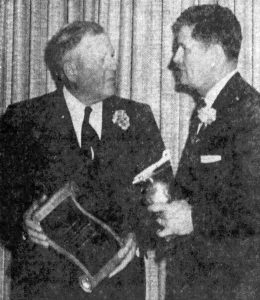
Clyde Ice Field
When Clyde was 99, they again honored him. The celebration started with a skydiving performance. One of the skydivers gave him a copy of a watercolor portrait of himself. The artist later provided him with the original.
The event was then centered around naming the field at Black Hills Airport after him. He was honored, but a bit surprised.
Joe Foss
Joe Foss, former governor, WWII ace pilot, and friend of Clyde, was the main speaker. He had paid Clyde $1.50 to take him on his first plane ride, which was a flight over Sioux Falls. Joe said that he was glad they put Clyde’s name on the field while Clyde was alive. Of himself, he said, “Some guy wanted to wait until after I had been dead for five years, and I didn’t care for the idea.”
He also talked about Clyde and the other brave aviation pioneers who paved the way for bigger, faster airplanes and jets. Additionally, Rhonda Sedgwick, who had authored Sky Trails: The Life of Clyde W. Ice spoke. Clyde autographed copies of it with special messages in each one.
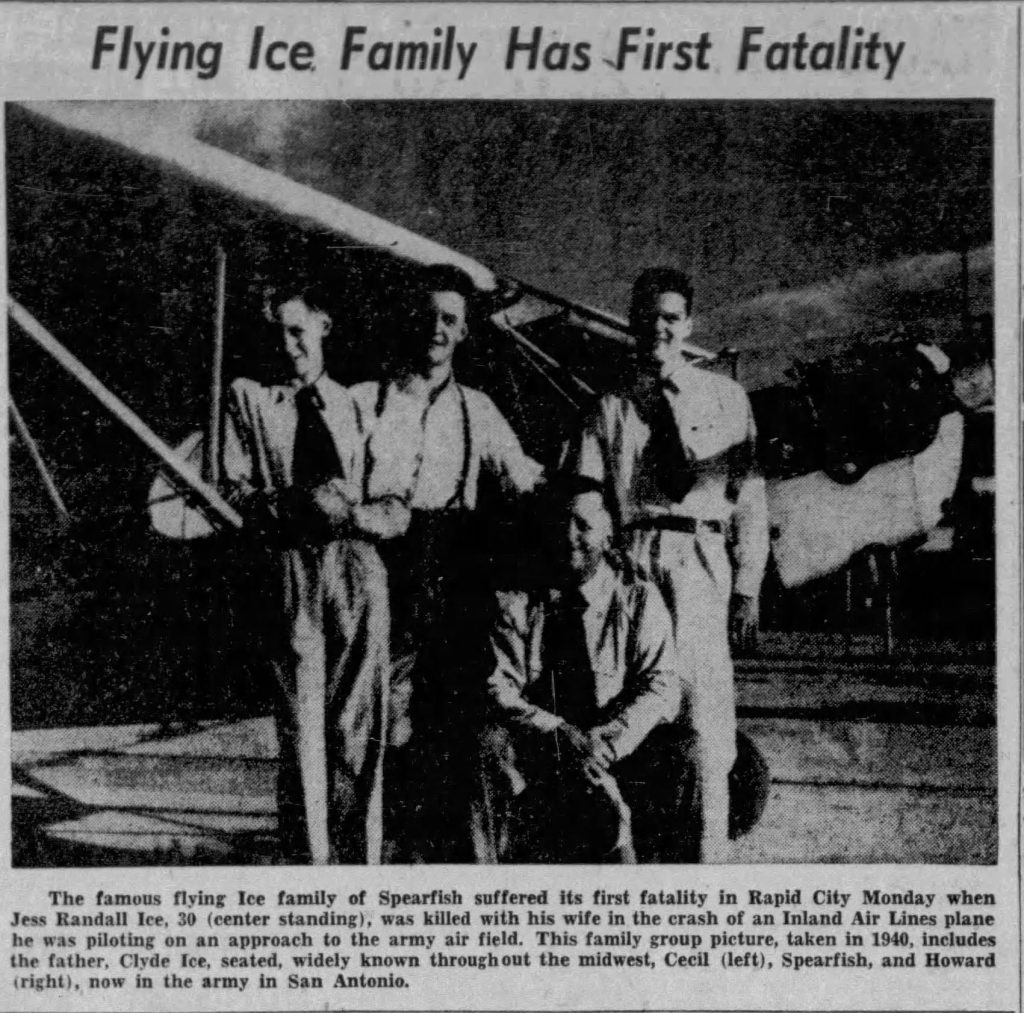
the Premie
Another very special person was in attendance that day – Marie (Peterson) Ide, the premature baby whose life he had likely saved in 1947 by making the flight in the blizzard. She was now a well-educated, married woman. Clyde and Marie had kept in touch since her high school days. Clyde considered that rescue mission the highlight of his career because it was so challenging. He also believed that there was no other pilot that could have made that trip safely. Interestingly, the doctor called out the same situation when discussing the highlights of his own career.
Clyde’s son Howard, a retired Air Force Lt. Col., spoke on behalf of himself and his brothers thanking Clyde for all the time he spent flying with them. All of Clyde’s sons had become pilots and two of them still worked in aviation. Clyde and his sons had been known as “The Flying Ices.”
100!
By his 100th birthday, a milestone he reached before the state, more than 30 plaques honoring him were displayed in his home. Clyde didn’t just sit around and look at his honors, instead he remained very active. He still had a driver’s license, hunted, and worked on his farm. Besides his glasses, he had added a hearing aid, which he thought was a real nuisance.
One of his favorite things to do remained talking about aviation. His memory was sharp and he loved to talk about all his years of flying. Flying was still his passion and he also loved the attention he got when the subject came up.
The Spearfish Chamber of Commerce honored him with a birthday party that was open to the public. However, Clyde also got a bit of birthday flying in. He went up and took the controls from the pilots of two different planes for a bit, but told the reporter to keep it quiet because his license had lapsed. The reporter in turn wrote about it in his article.
Sampling of Clyde’s Honors
- South Dakota Aviation Hall of Fame
- South Dakota transportation Hall of Honor
- On the Wall of Honor at the National Air and Space Museum
- “Patriarch of South Dakota Aviation”
- OX5 Aviator Pioneer Hall of Fame
- Mr. OX5 1975
- Clyde W. Ice Field at Black Hills Airport
- 1979 High Plains Aviation Award
- Nominated for National Aviation Hall of Fame
- Honored by the Civil Aeronautics Association
- Honorary member of the Air Force Association
- Recognized by National Geographic for his coyote hunting
-
Nominated by the Strategic Air Command for the National Wright Brothers Trophy
But, wait! There’s More!
The day after Clyde’s 101st birthday, he held an auction of household and farm equipment. He had finally decided to stop working the farm and his 3-acre garden. Instead, he decided it was time to sell his farm and fully retire. He was going to move to Pinedale, Wyoming where his wife, daughter, and son-in-law lived. His plans included fishing, hunting and enjoying himself.
Soon thereafter, Clyde was interviewed by Mark Junge about his life as a part of a Oral History project. His interview is on Internet Archive. Click here to listen to the lengthy interview.
The Last Flight
Clyde died July 17, 1992 at age 103. His sons Howard and Cecil took Clyde on his last flight, flying his body from Jackson, Wyoming to Mayo Clinic in Rochester, Minnesota. He had donated his body to the clinic for research. Clyde had had a serious injury from a fall some years earlier and doctors from Mayo Clinic had been instrumental in not only helping him physically, but also in helping him keep his pilot’s license.
At 99, Clyde had received a physical, including a stress test, and the doctors were simply in awe. I don’t know what the doctors learned from Clyde’s body, but his son Howard credited his longevity to “eating wild game, not smoking or drinking and being able to relax.” He said that Clyde could sleep “anytime, anywhere.”
Clyde left us with two pieces of advice:
“You can’t ever say something can’t be done, because the next thing you know, somebody will turn around and do it.”
“The only good reason to get all excited about the past is if it will help you do something better in the future. . . . Otherwise, why look back? I know where I’ve been. I’d rather see where I’m going.”
My Thoughts on Clyde
Clyde appears to me to be a good talker and a good salesman. He also saw opportunity at every turn. He also seemed to have a big heart and wanted to help everyone. However, he doesn’t seem to have been so good at the financial aspects of business.
Clyde’s claims to fame, as I see them, include: teaching himself to fly, flying for so many years, his safety record, and developing a technique for thinning the coyote population from the air. I would venture that no other individual has ever flown for over 60 years without a serious accident after teaching themselves to fly.
One article referred to Clyde as a “gypsy flier” and I think that describes him well. He appears to have loved the constant change and the big challenges. He also thought fast on his feet, creating solutions to problems that arose. He was definitely born to fly and was a natural. Although he said that he was born 50 years too early, I think he was born at the perfect time for him. I am not sure he would have enjoyed the rules and structure that came along with the growth of the aviation industry.
Final Note
Several years ago, I communicated with Clyde’s nephew Larry. He shared information on the family with me. I had not researched the family beyond what Larry shared at the time. He never once mentioned that his Uncle Clyde was a somewhat famous pilot. Of course, it may have not been a big deal to him because his father was also a pilot, although lesser known than Clyde, and Larry himself had served in the Air Force.
 Nationwide – Stories that were published at various locations coast to coast.
Nationwide – Stories that were published at various locations coast to coast.
Prompts: Wide Open Spaces, Legal Troubles, Playtime, Off to Work, Off to School, In The News
#52ancestors52weeks




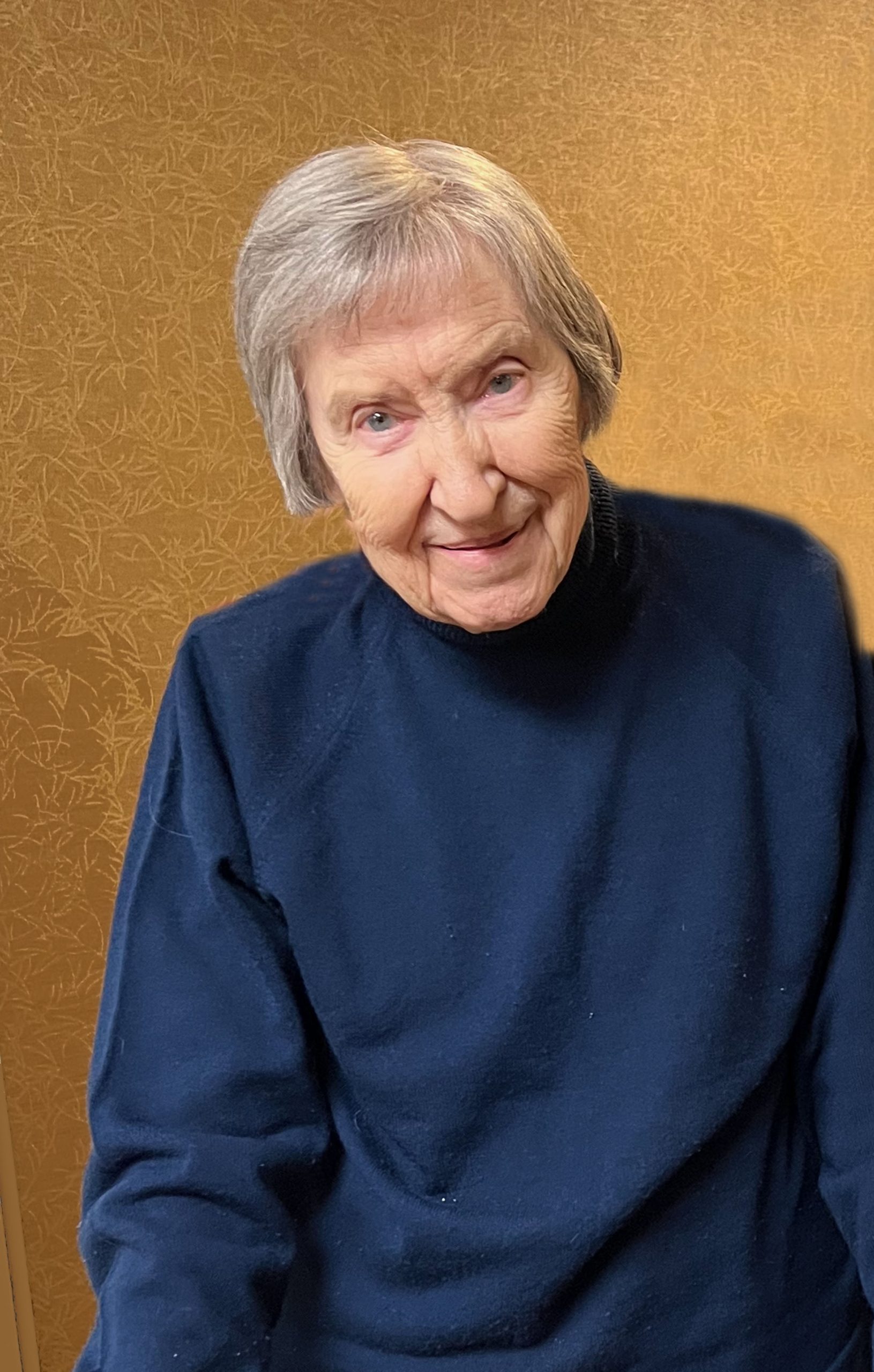
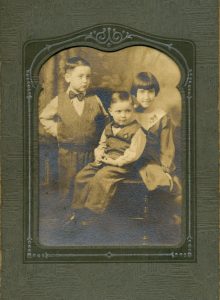
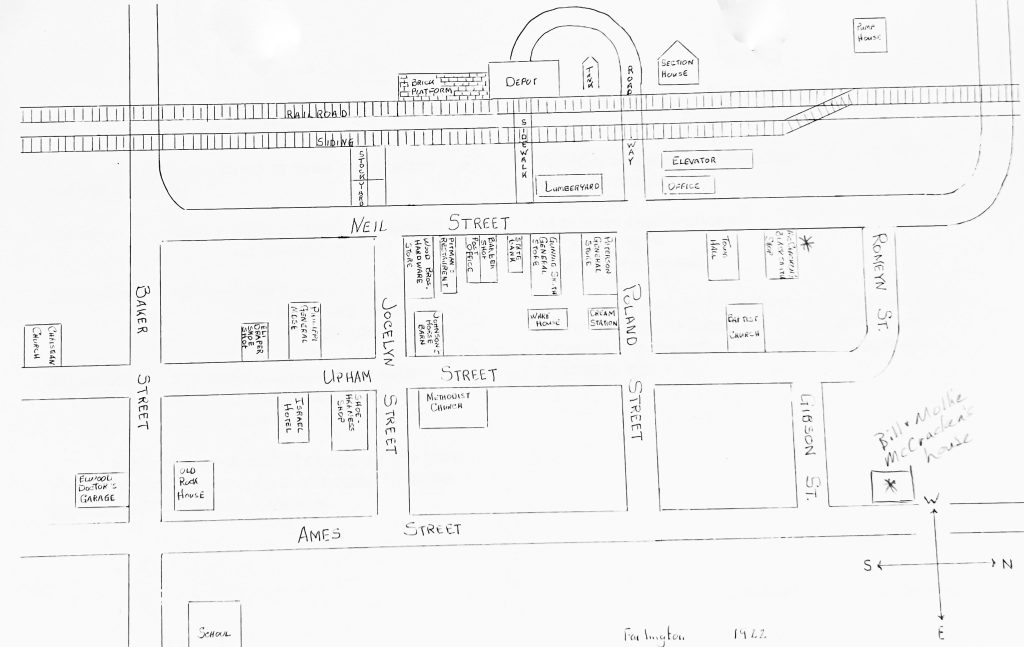
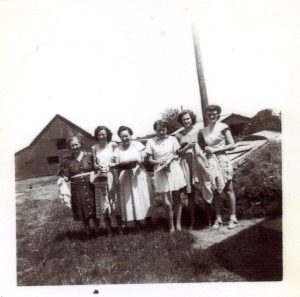

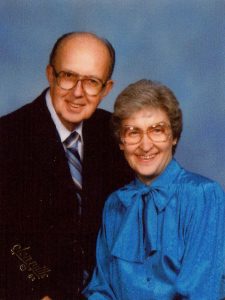
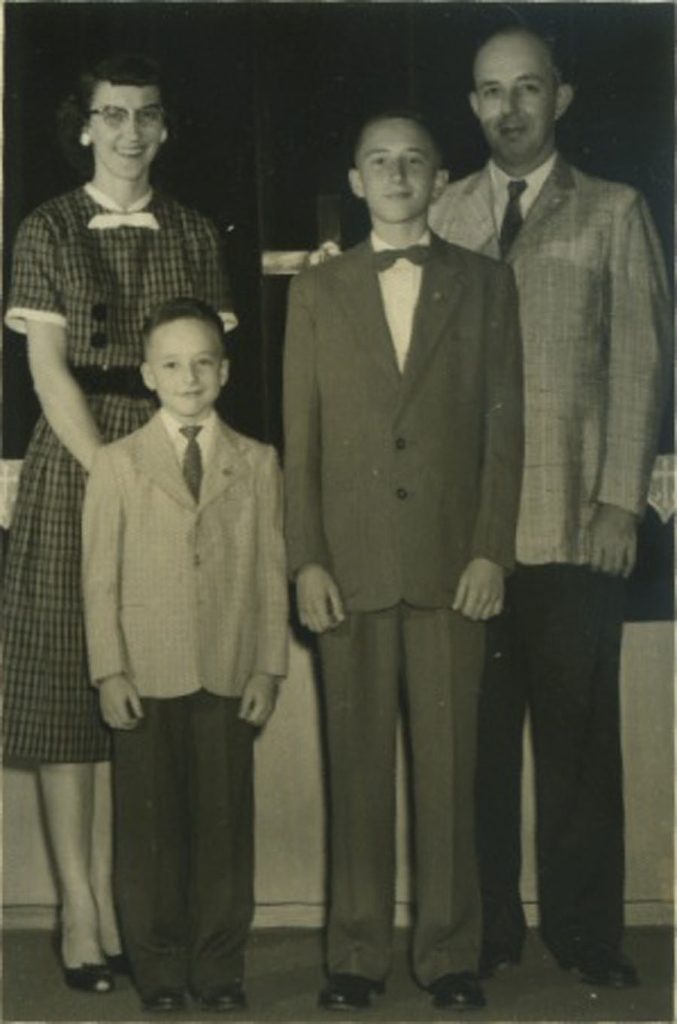

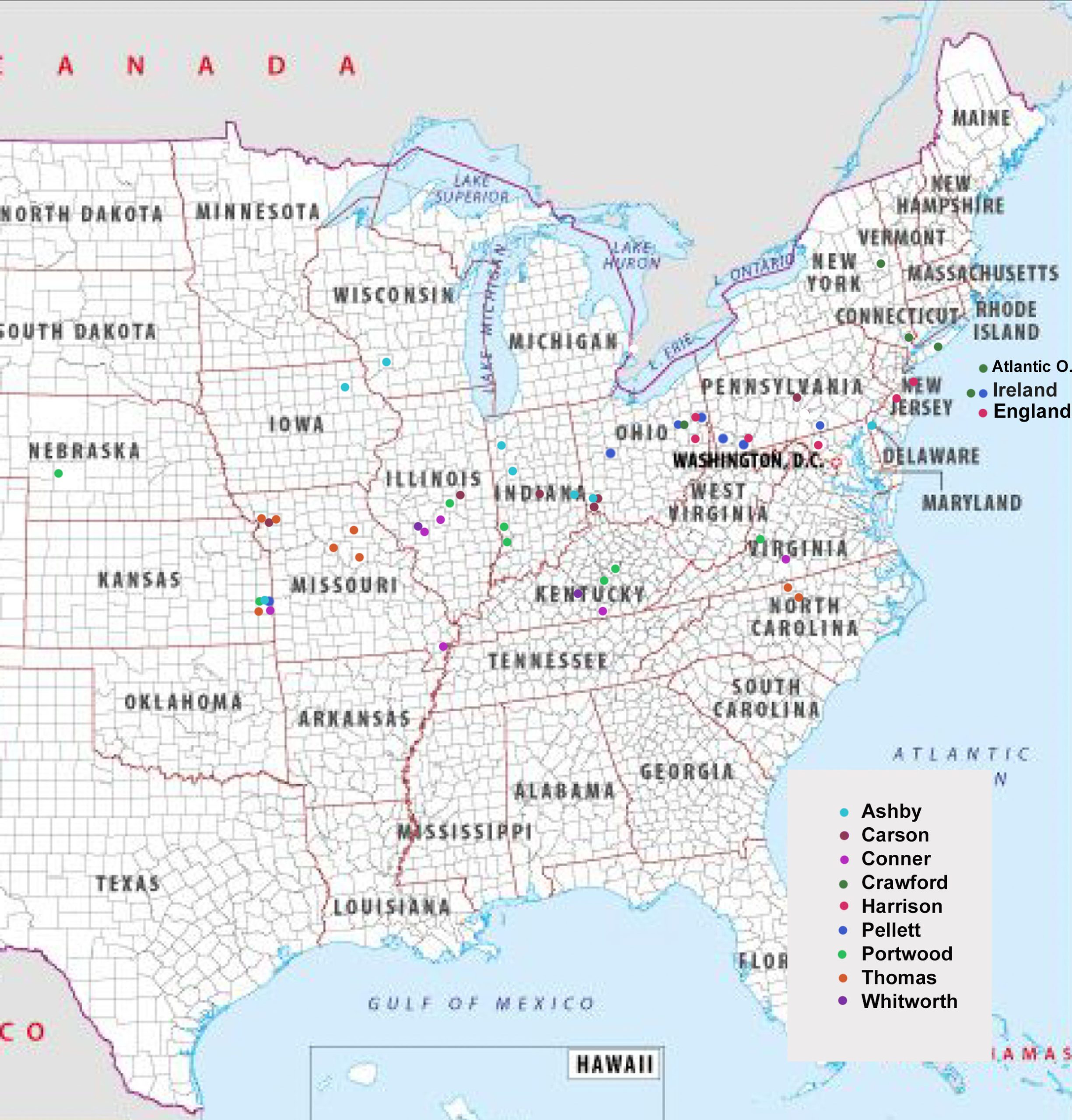

 Conner
Conner Portwood
Portwood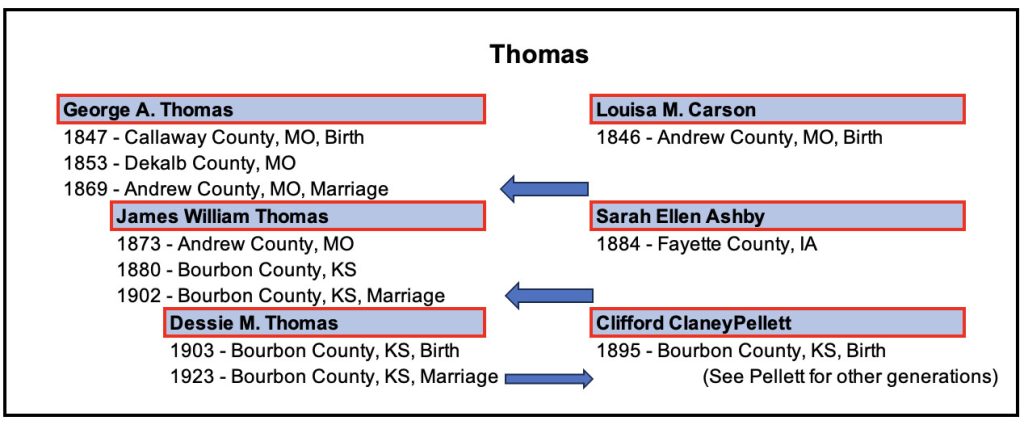 Thomas
Thomas Ashby
Ashby


 Source: https://usgenealogyresearch.atwebpages.com/Kansas/Bourbon/maps.html
Source: https://usgenealogyresearch.atwebpages.com/Kansas/Bourbon/maps.html